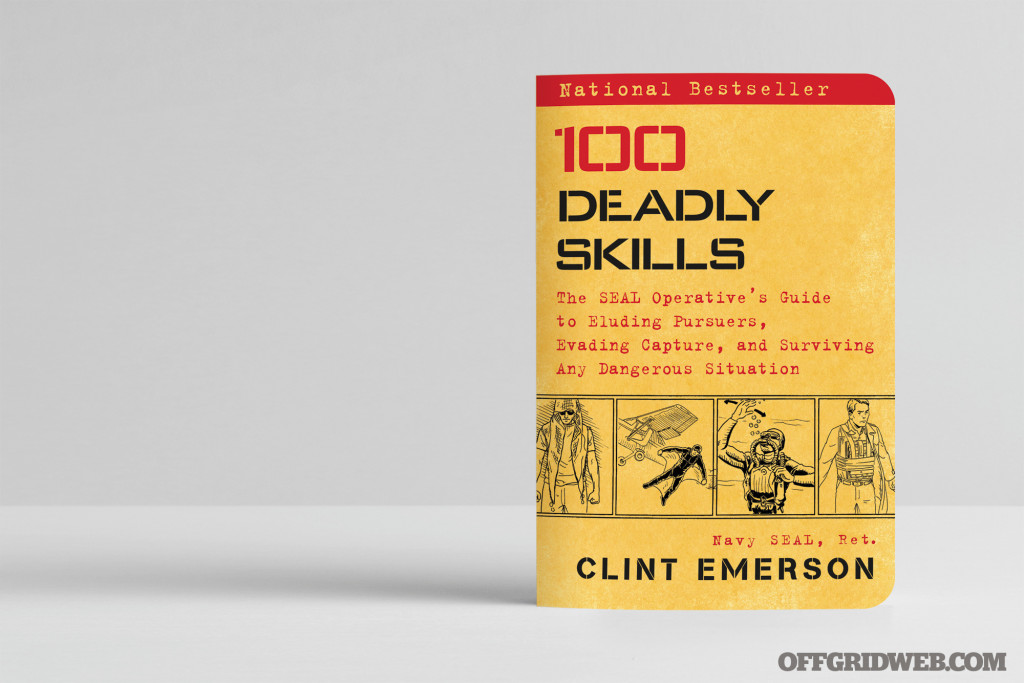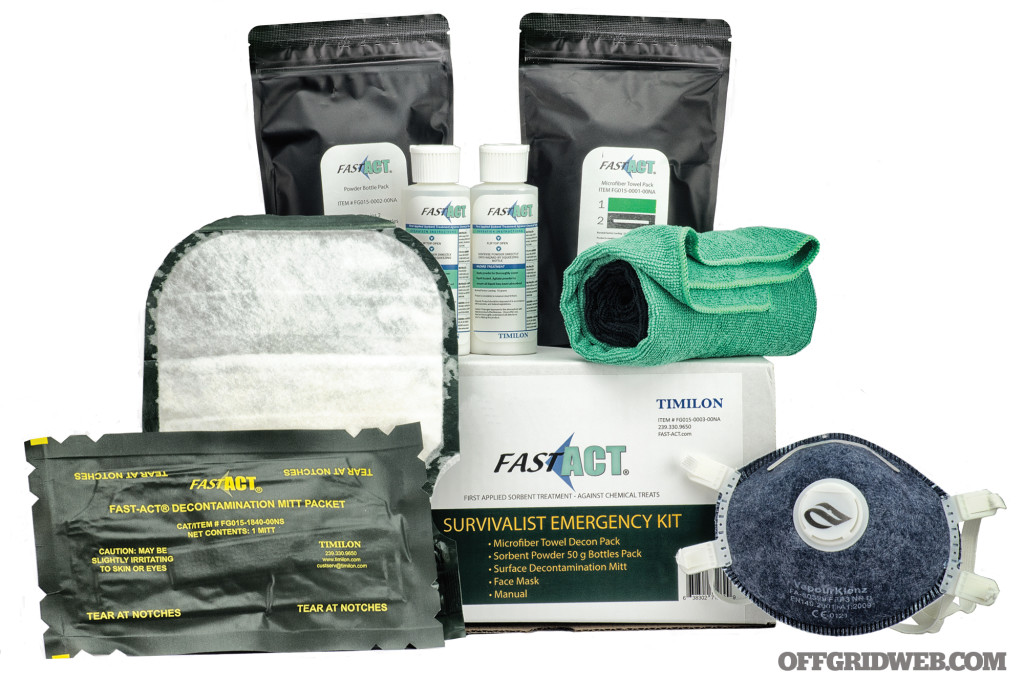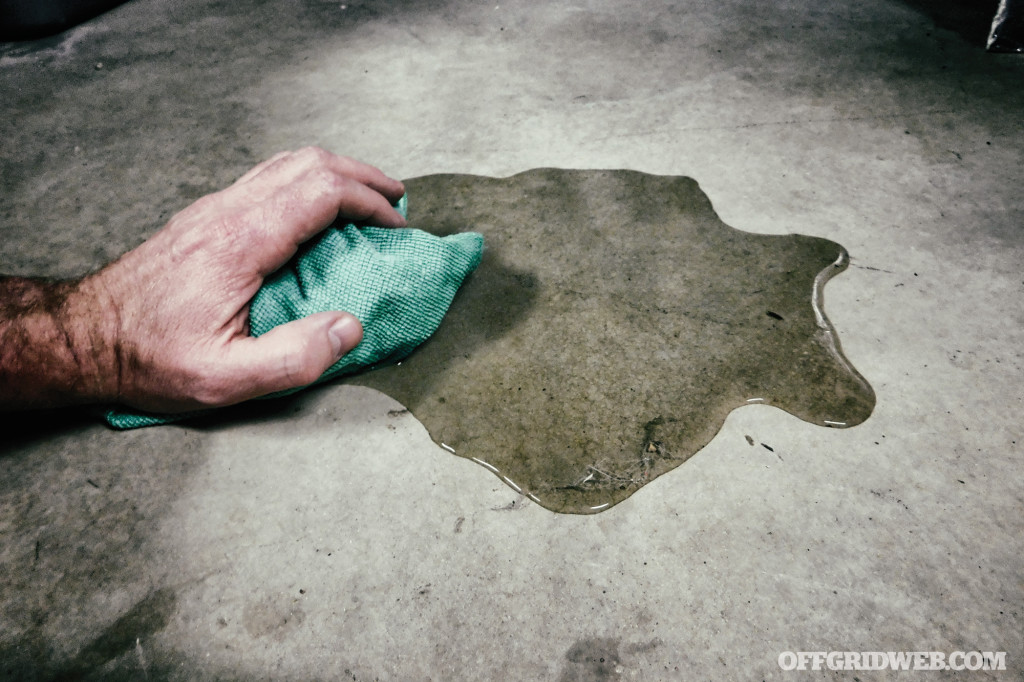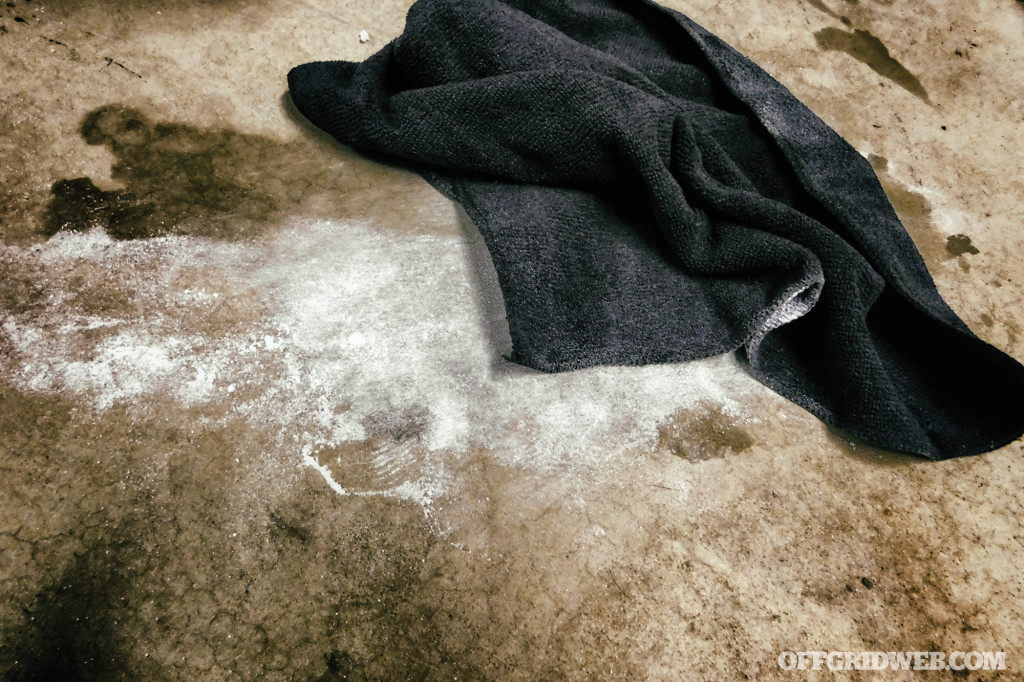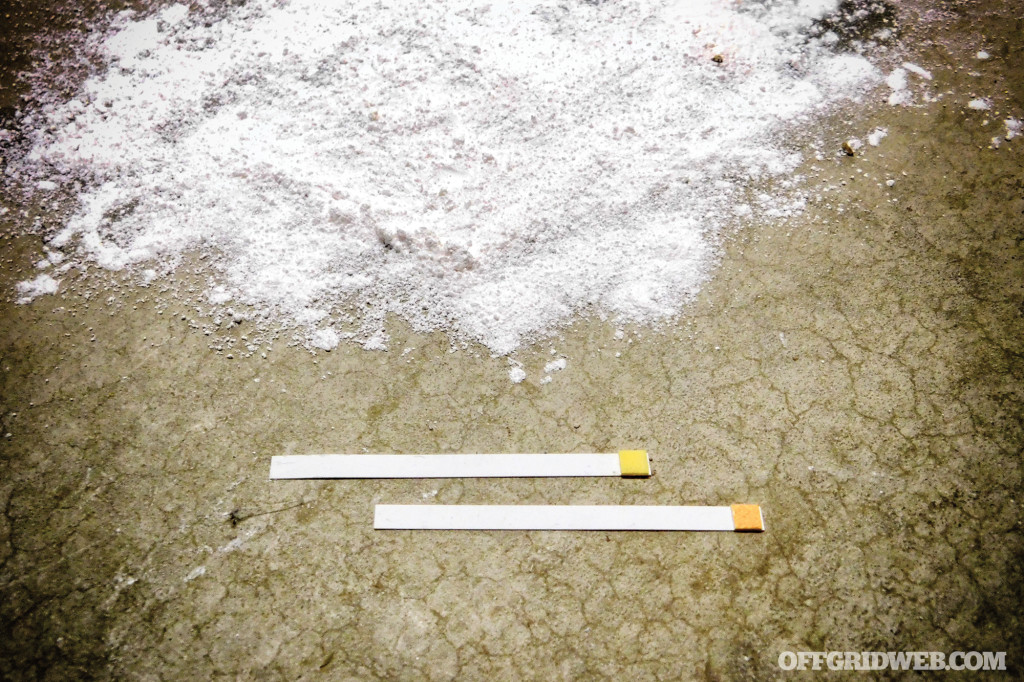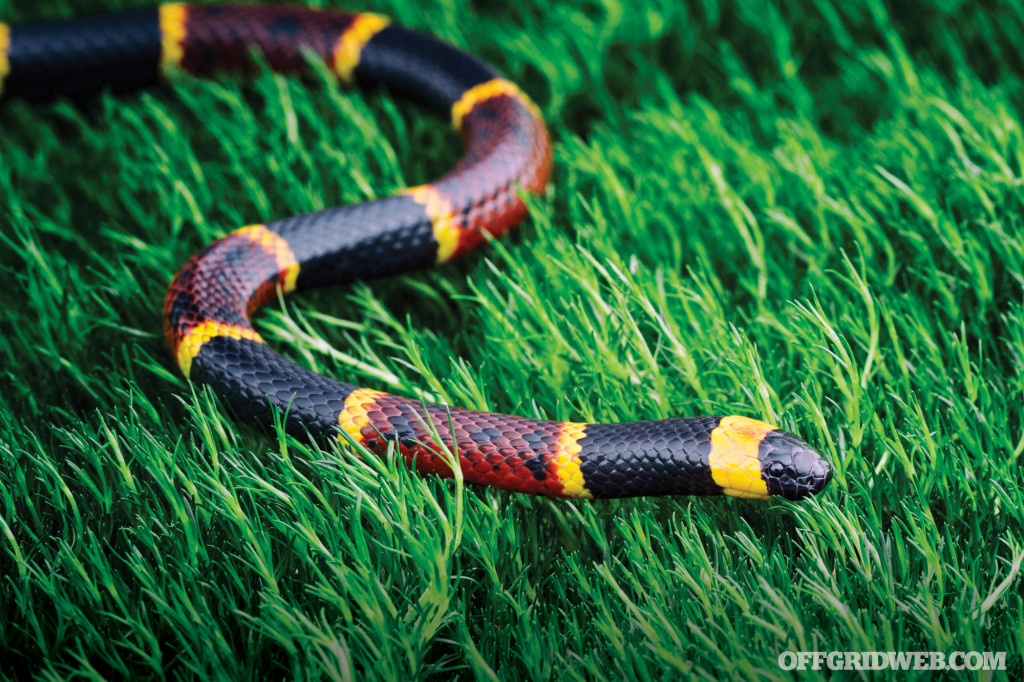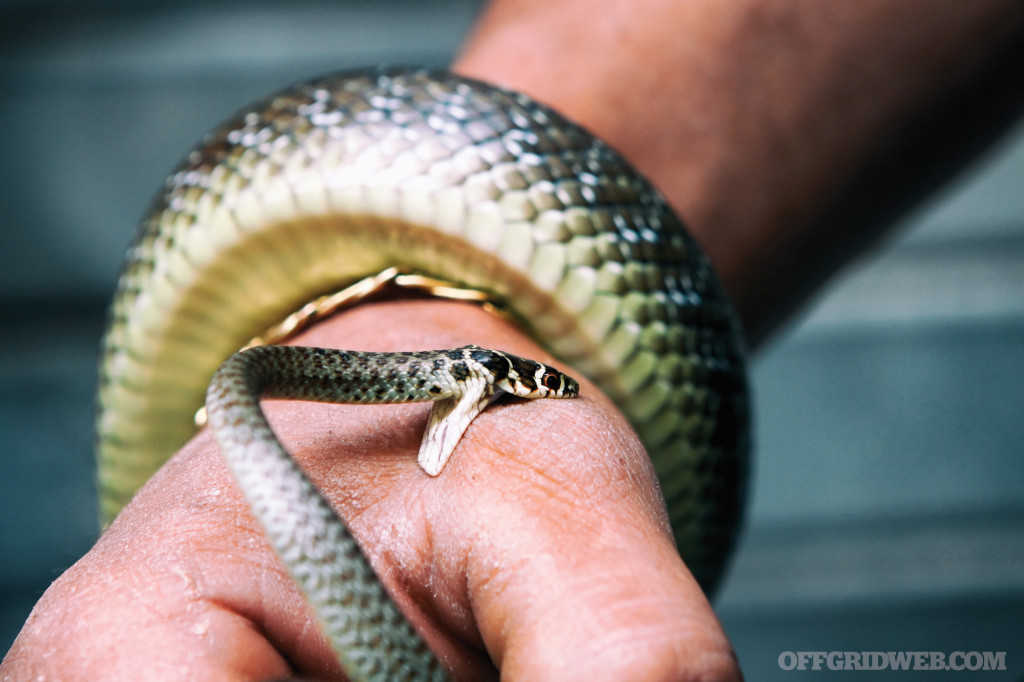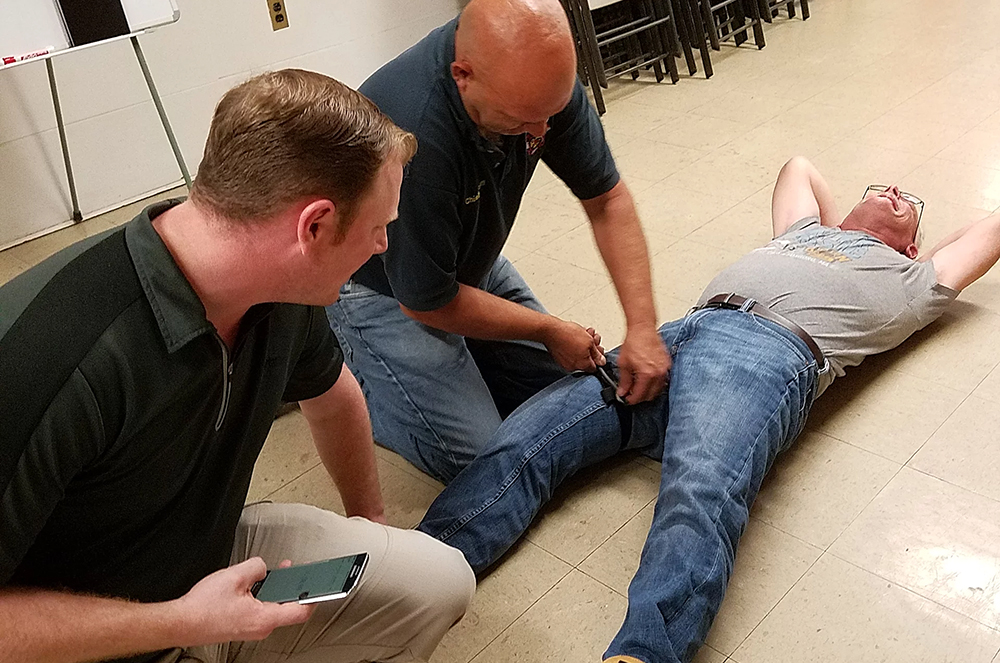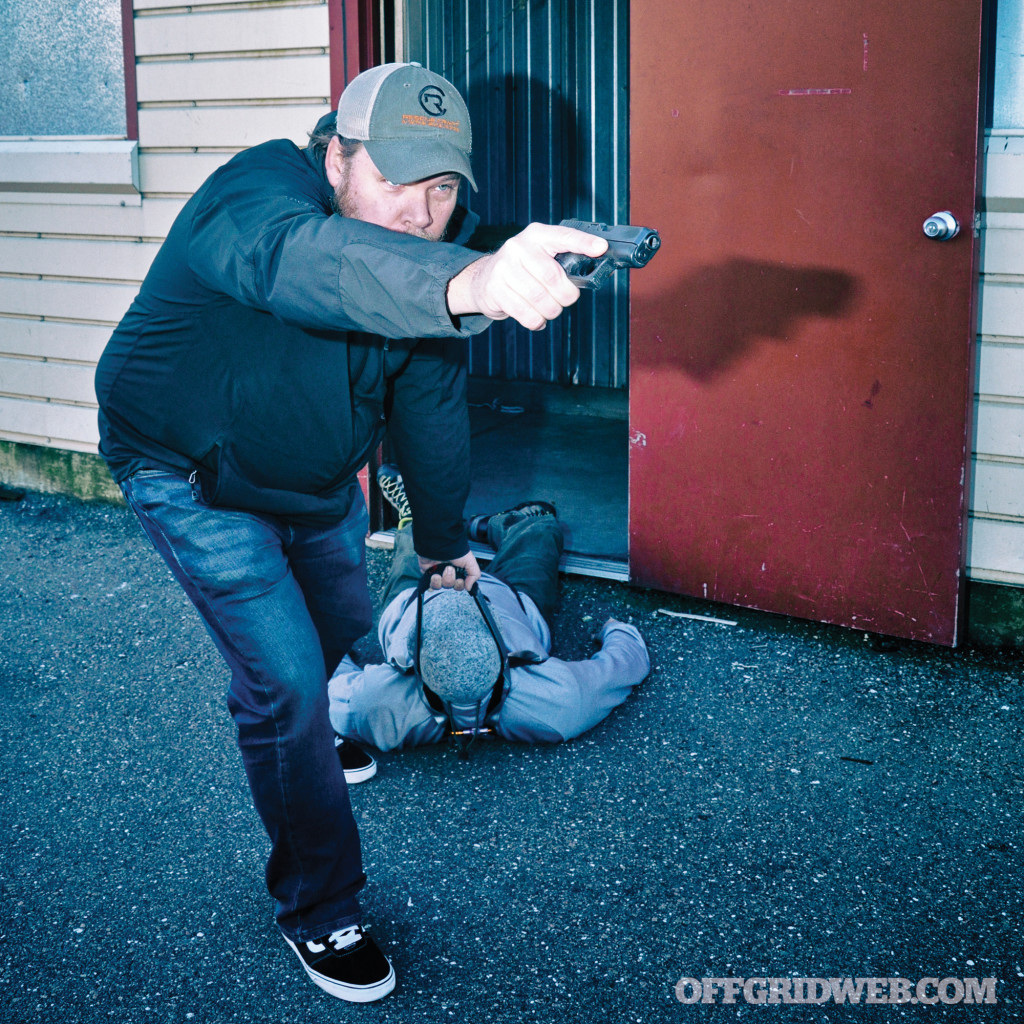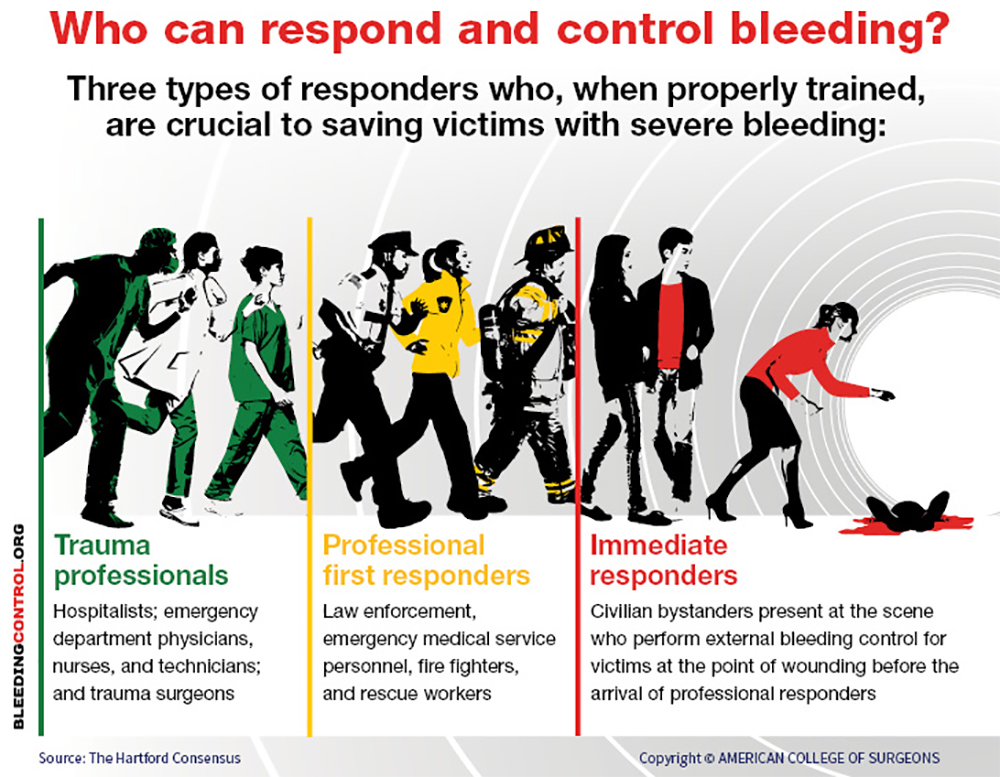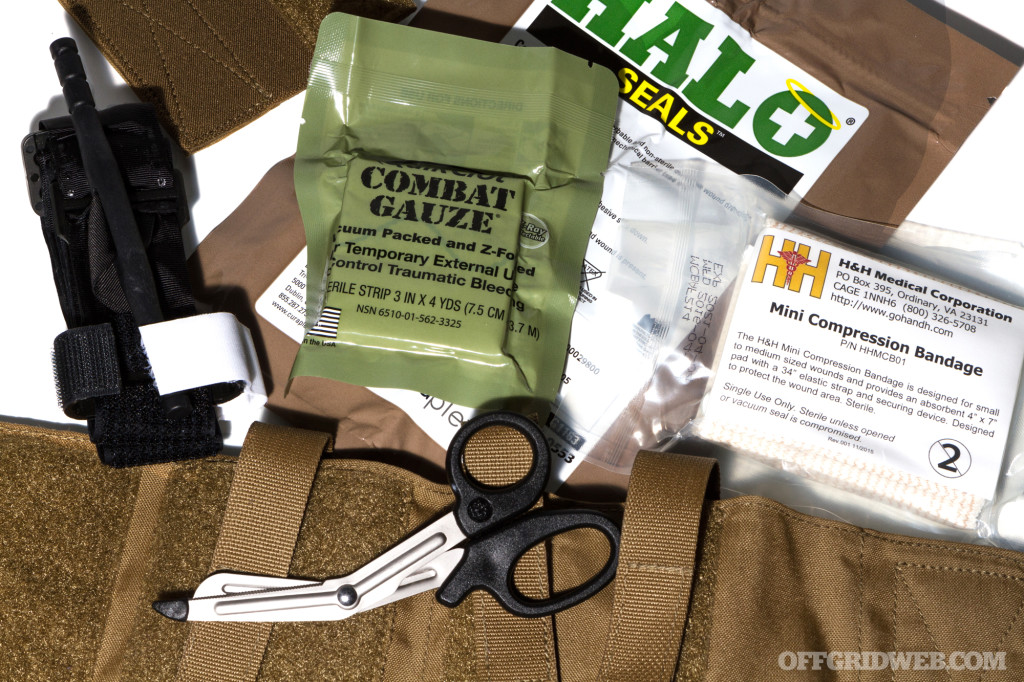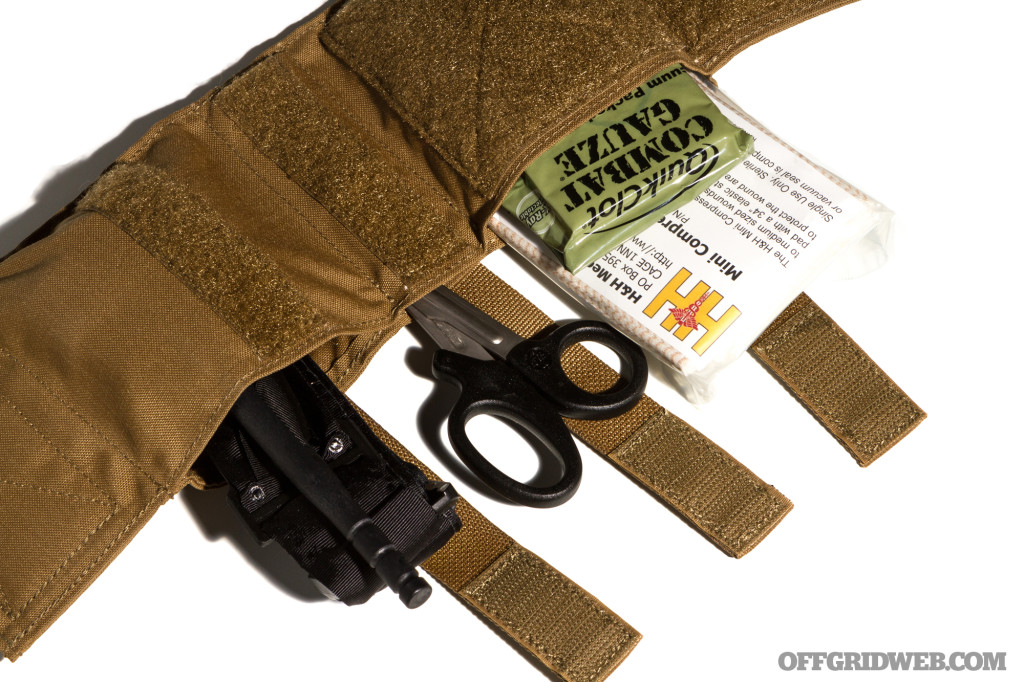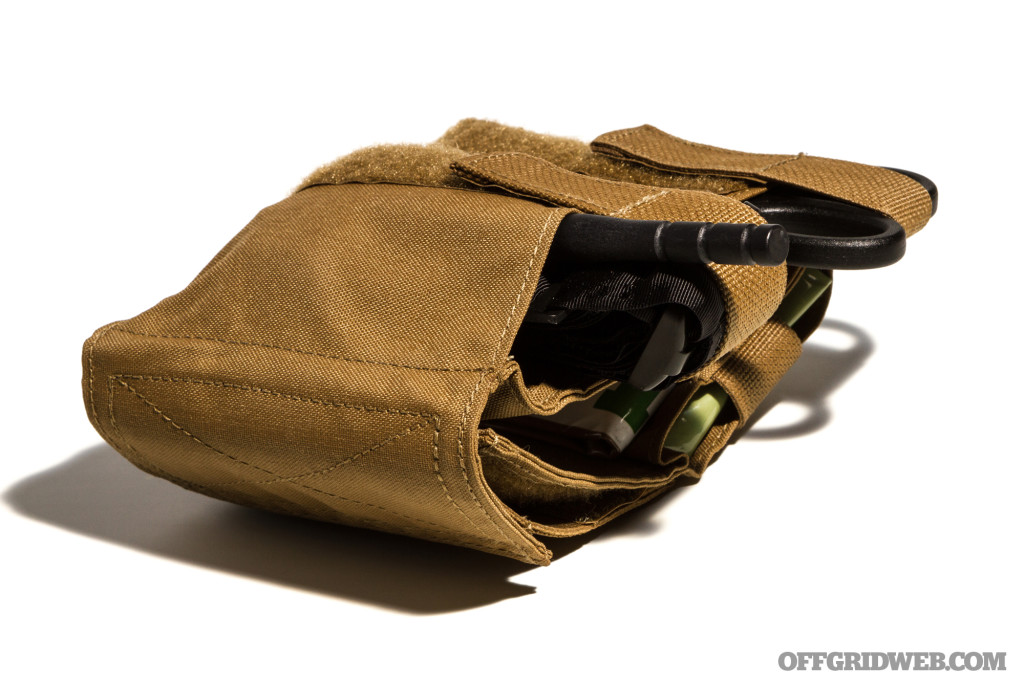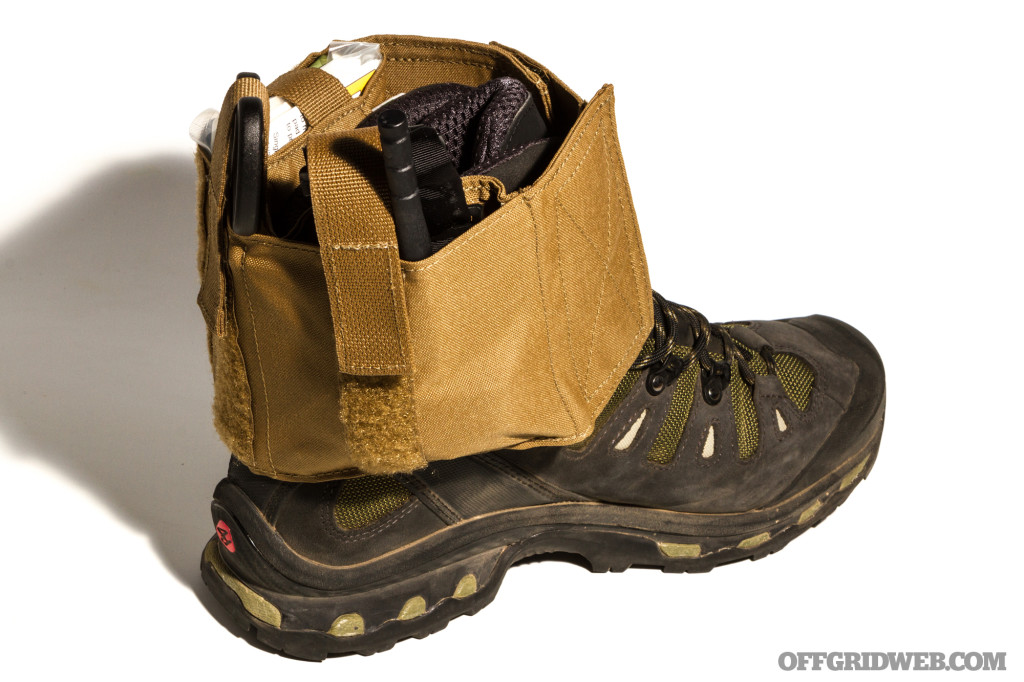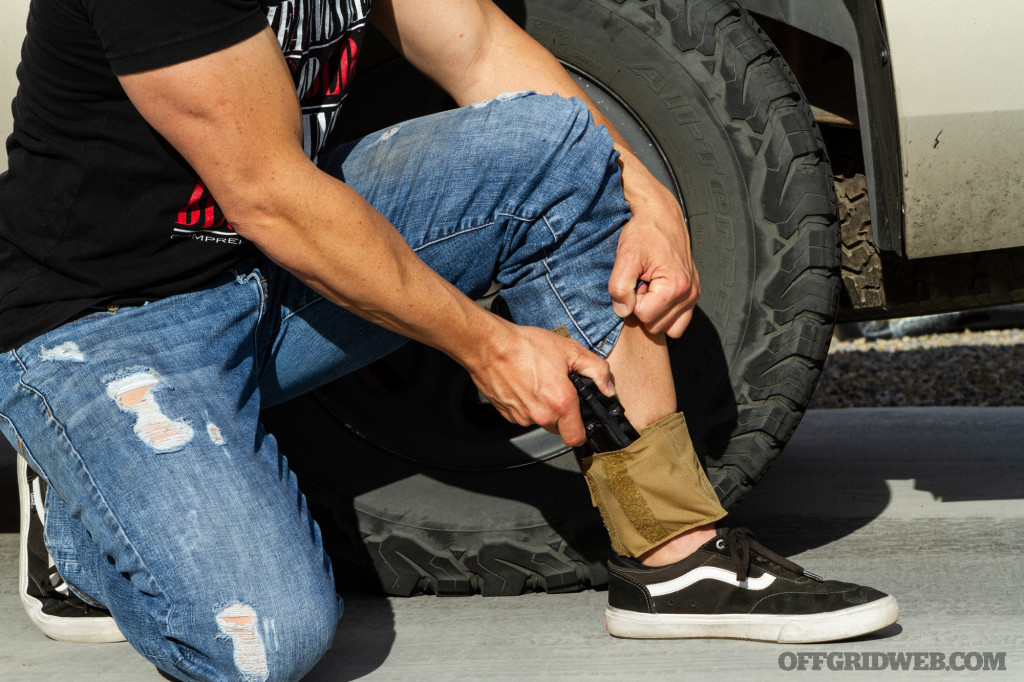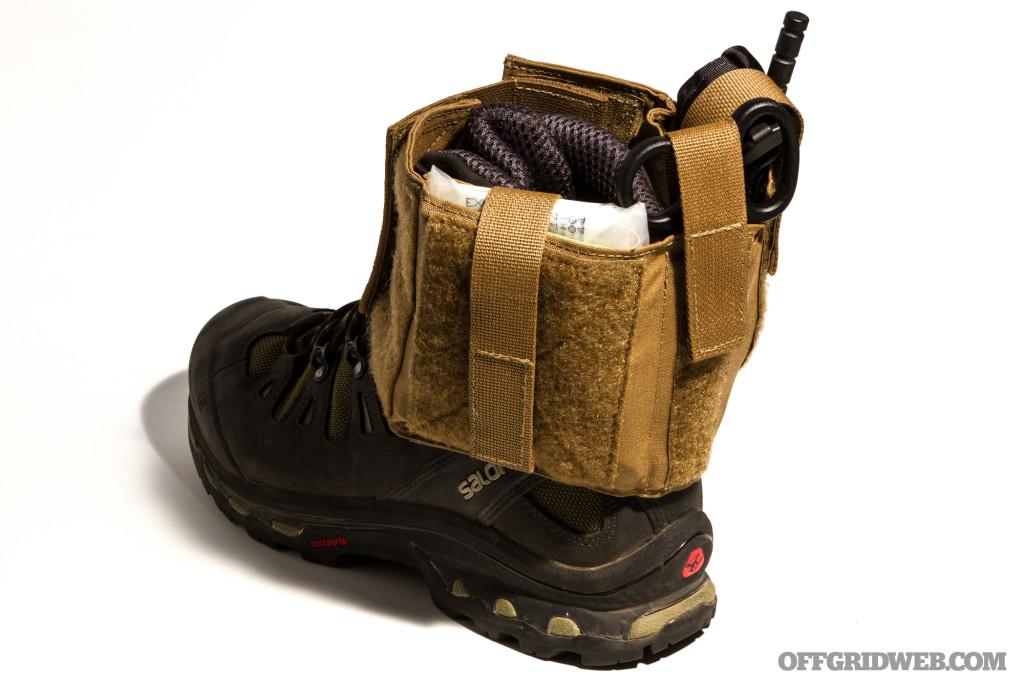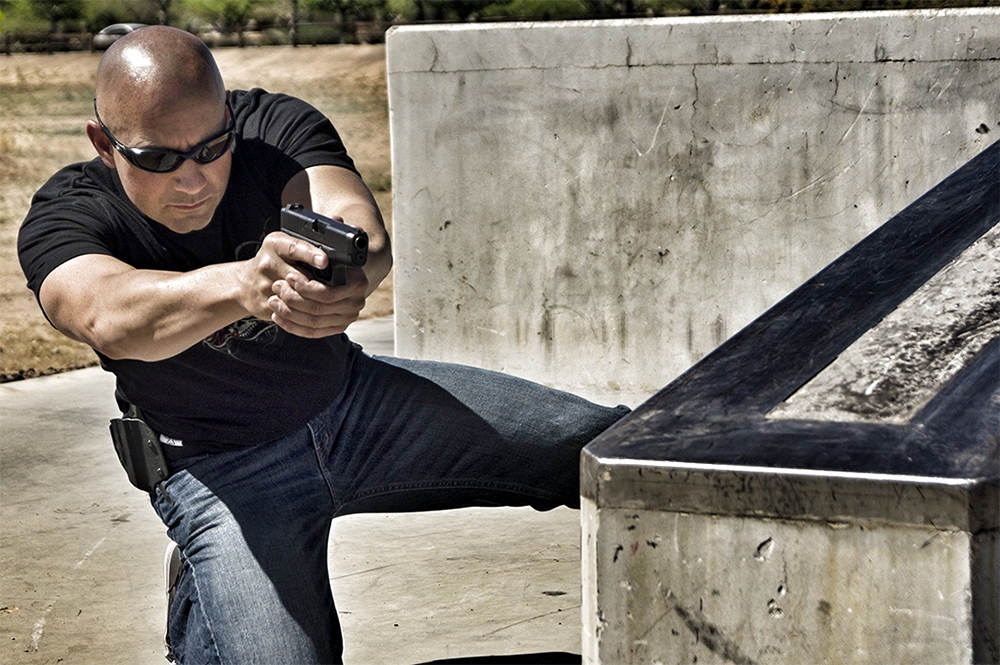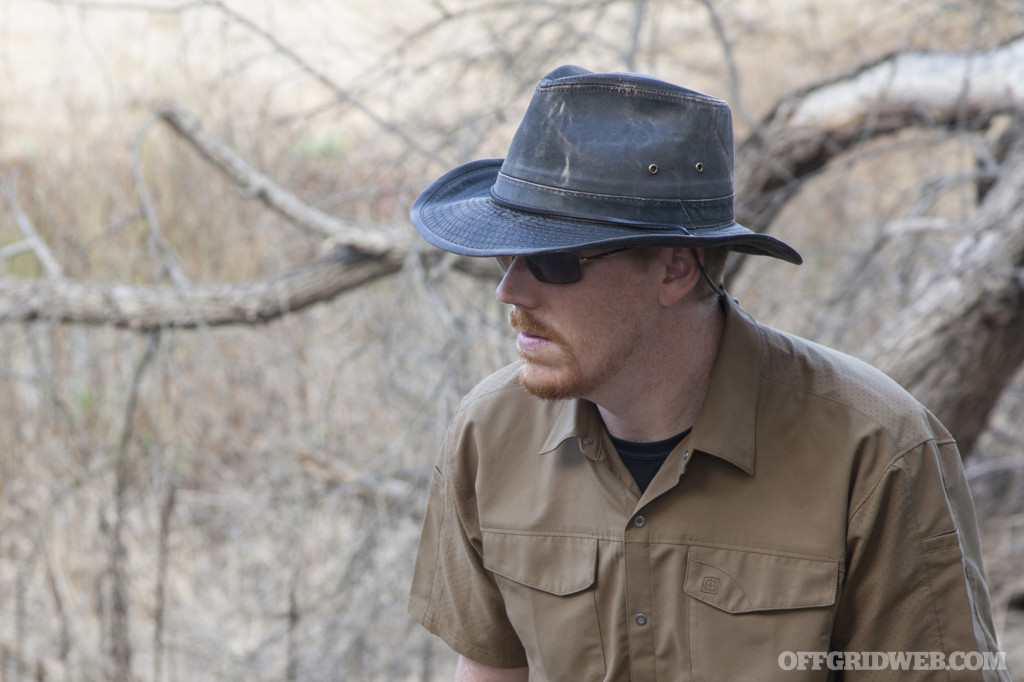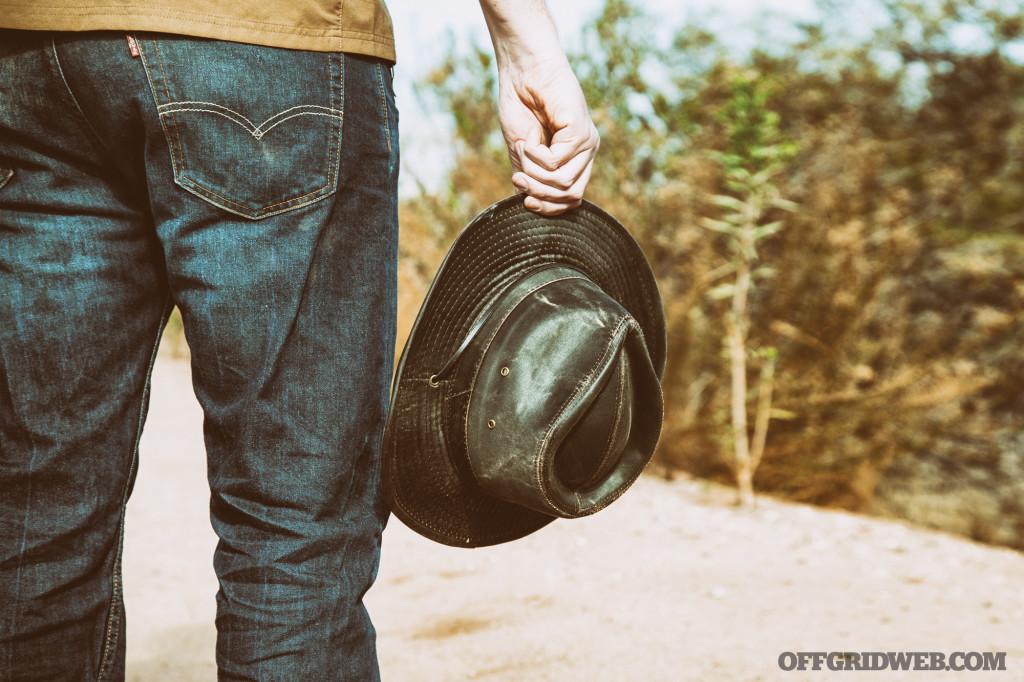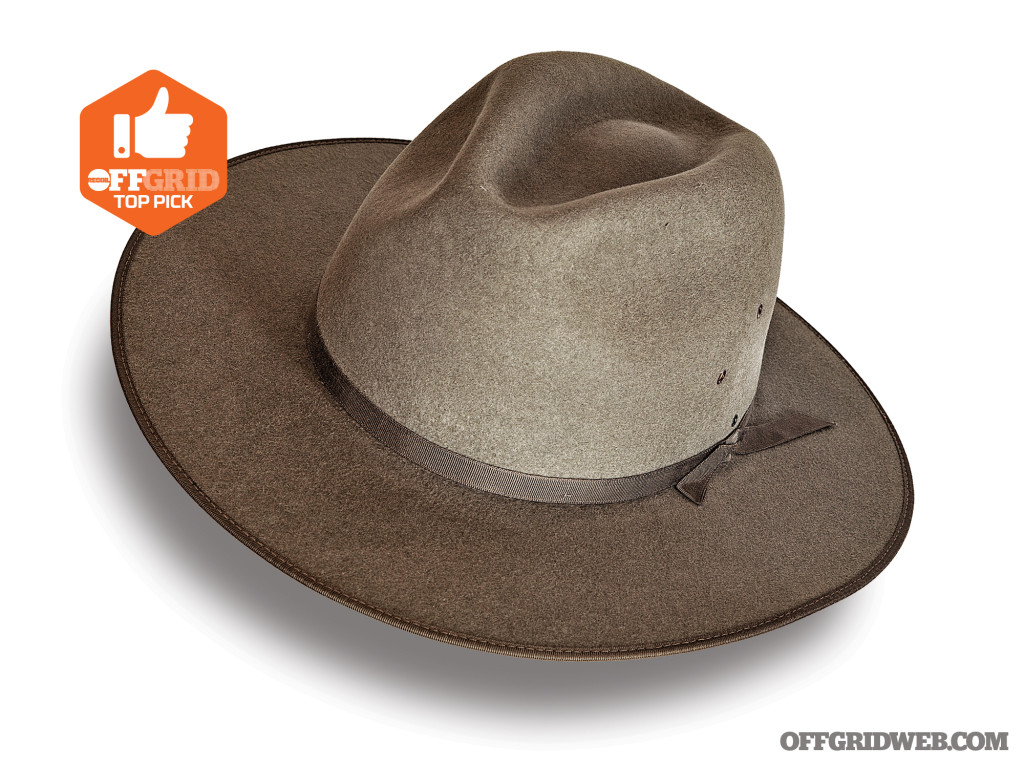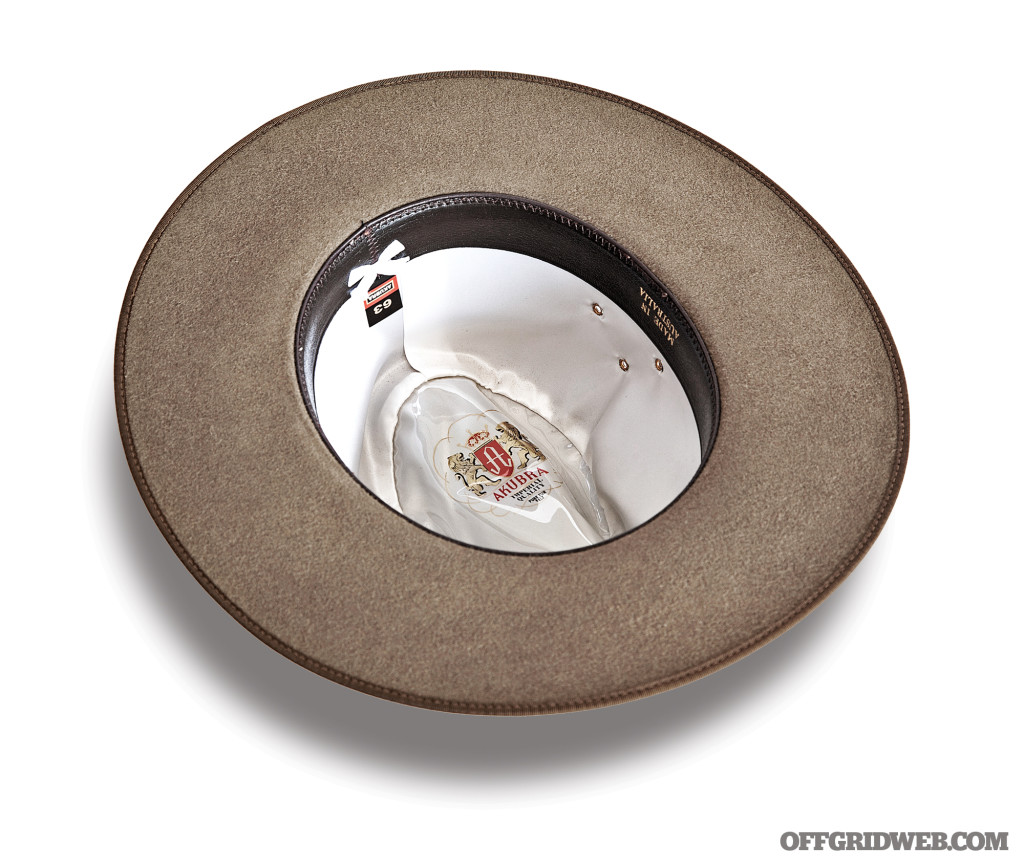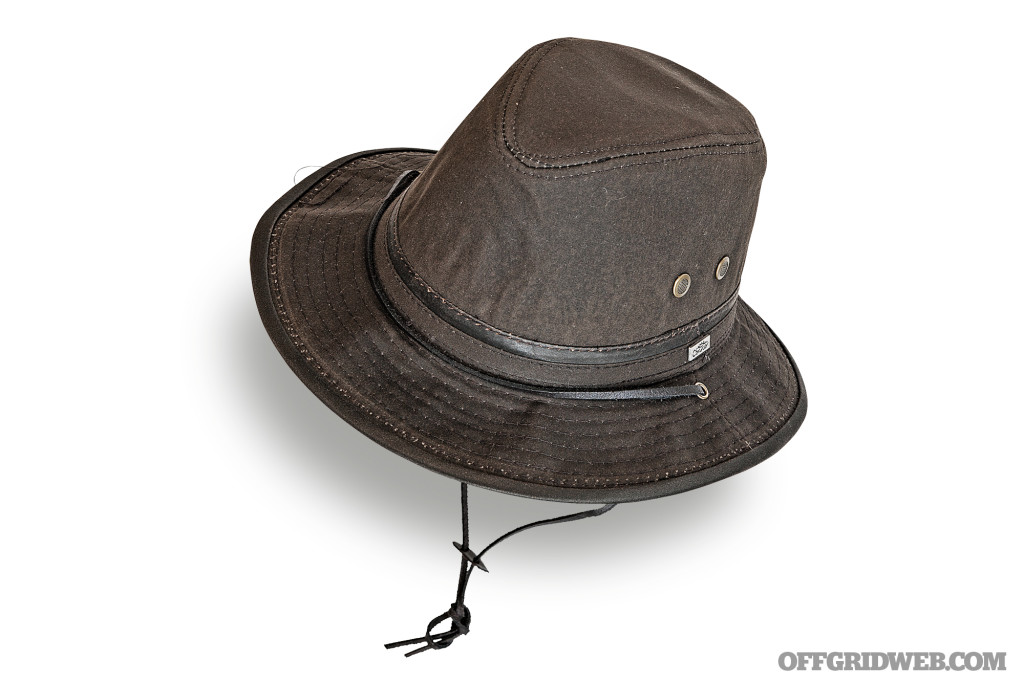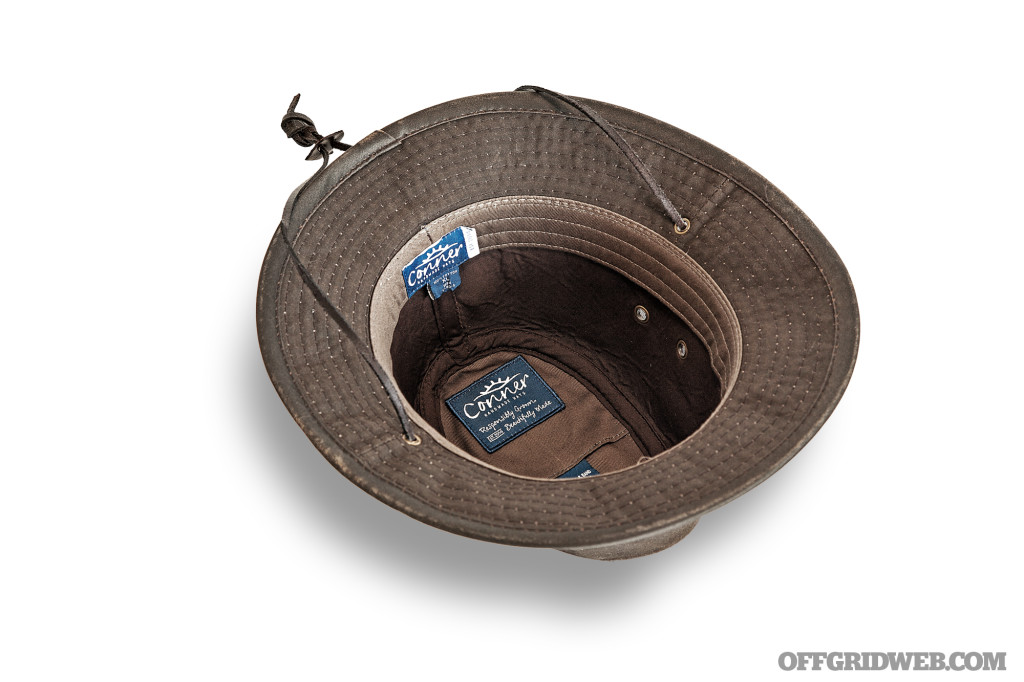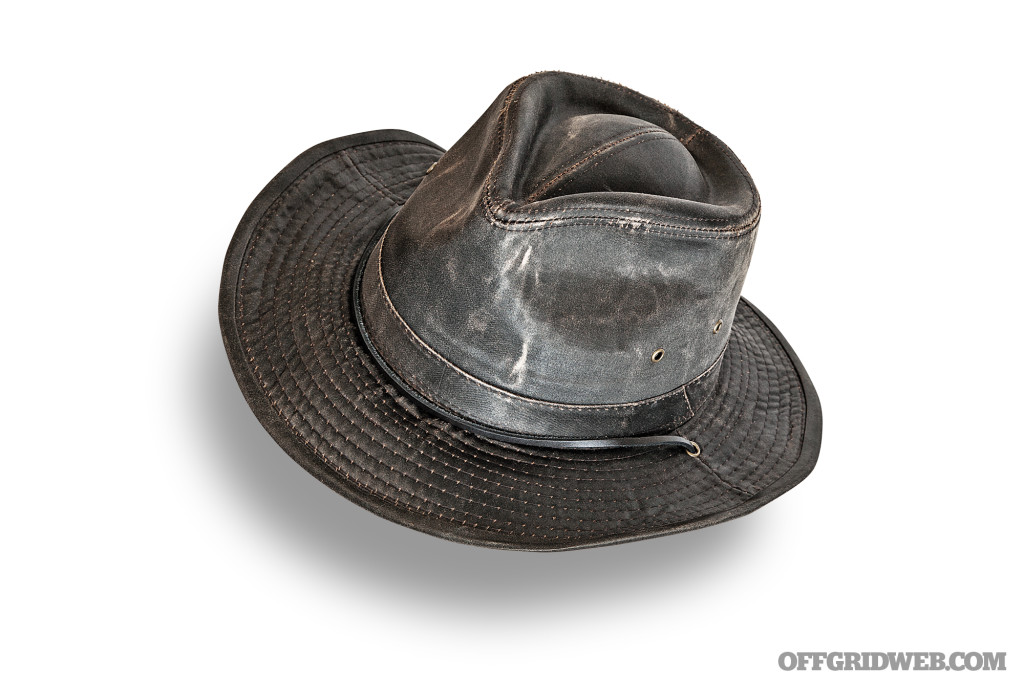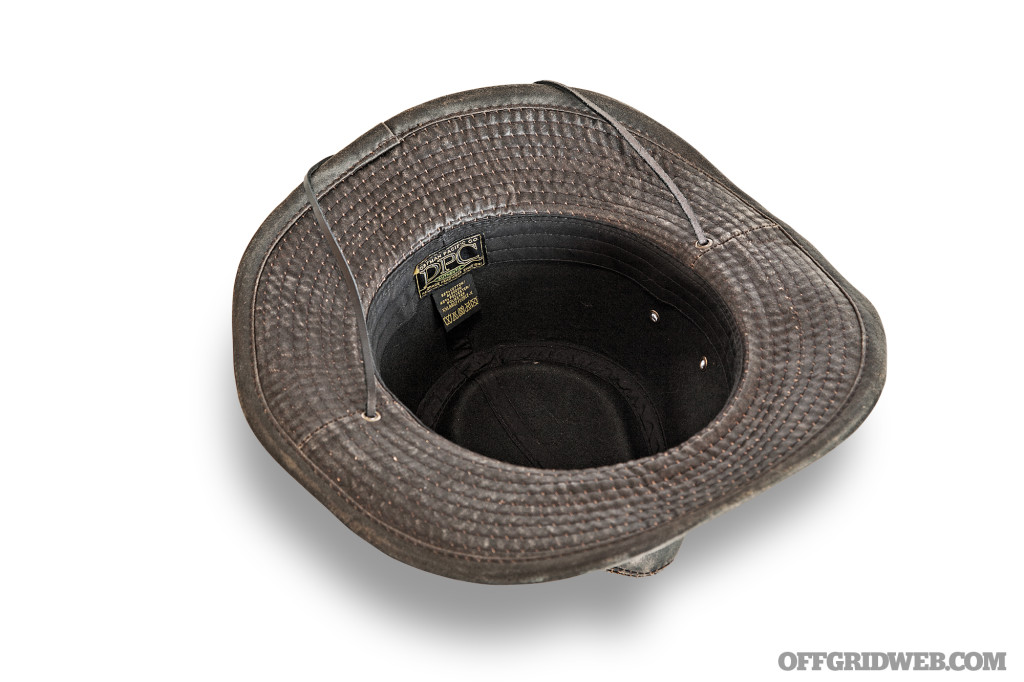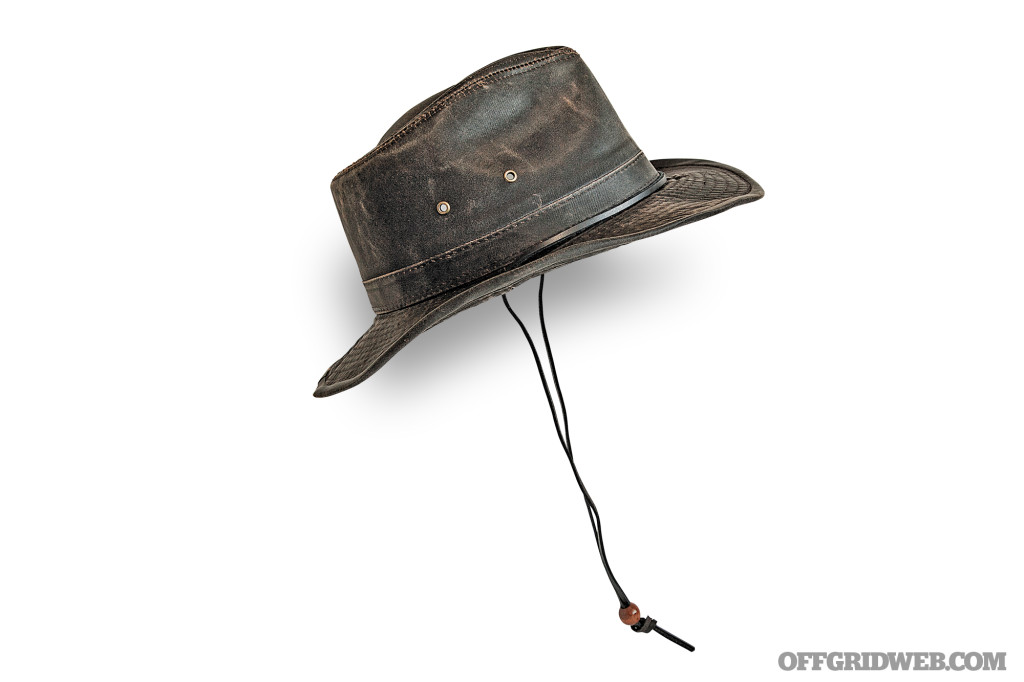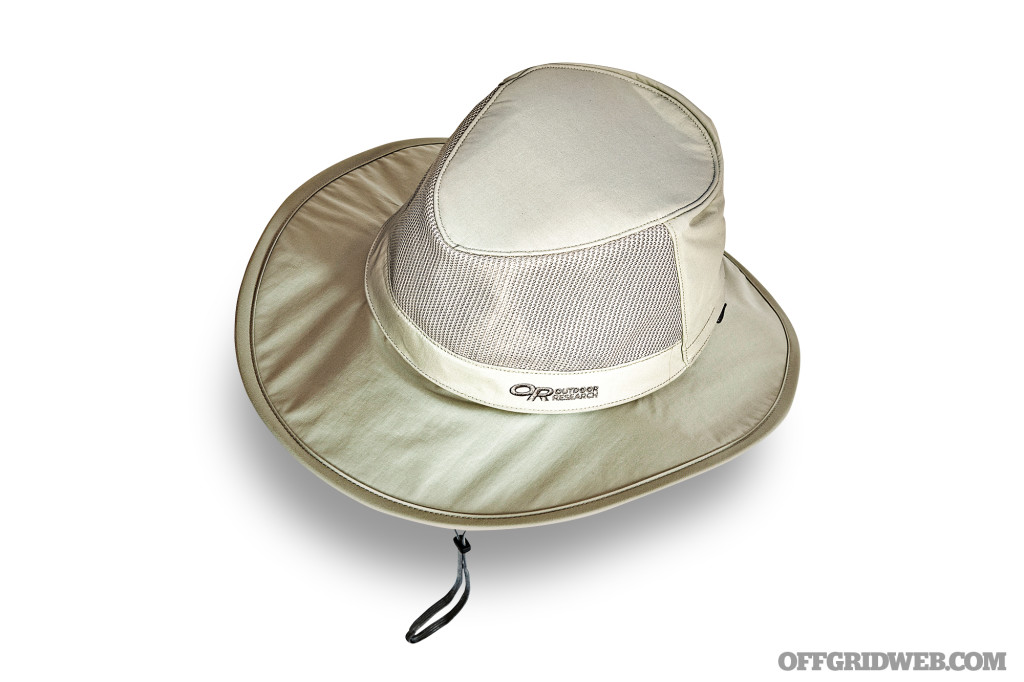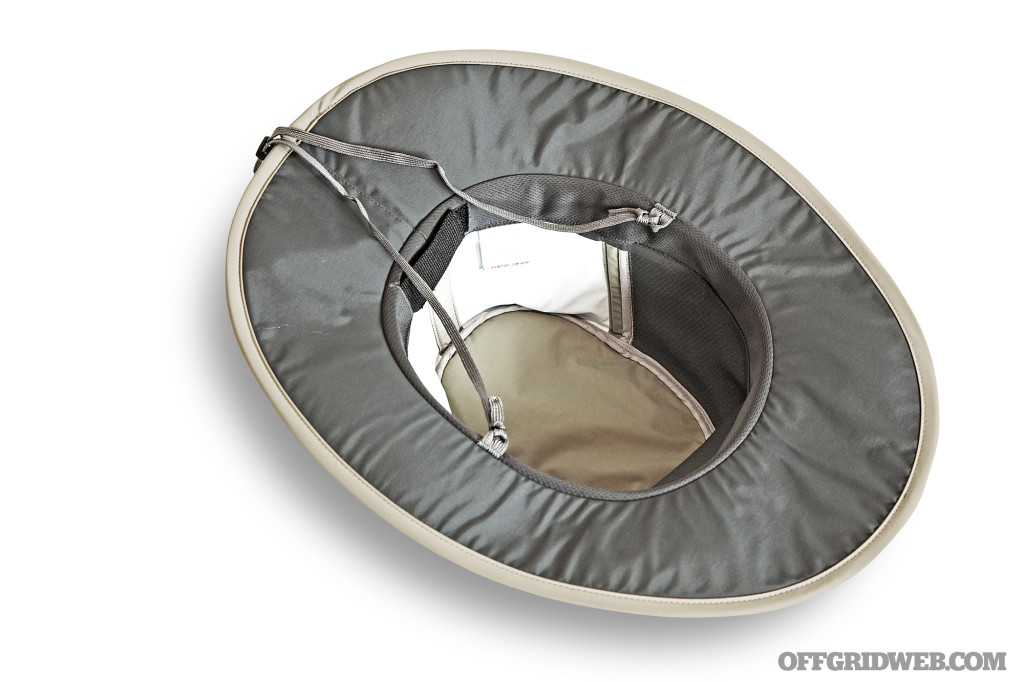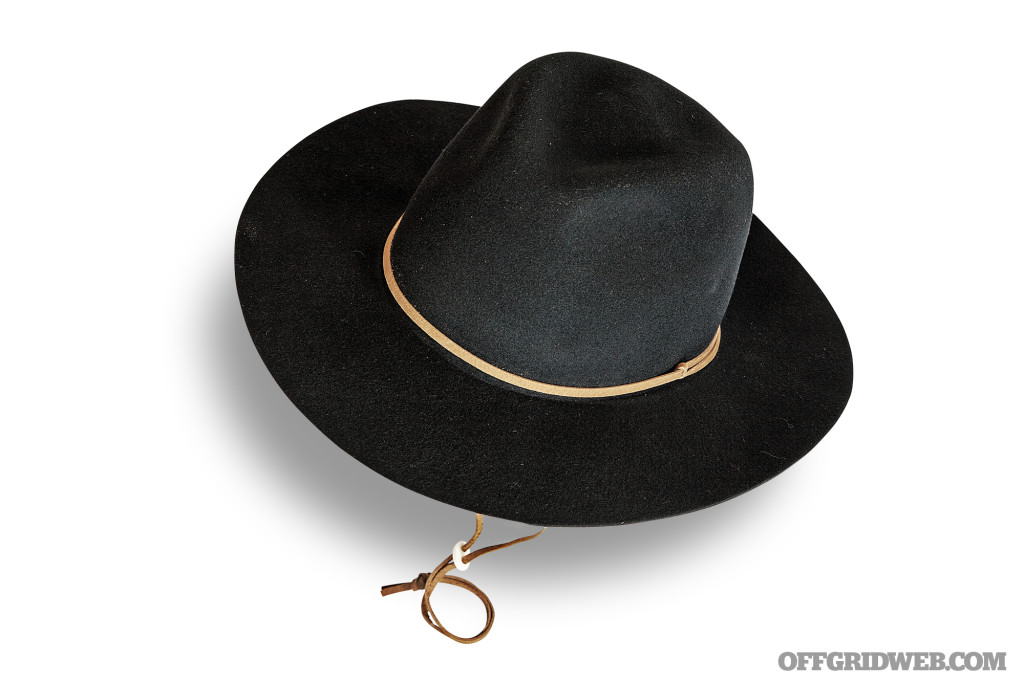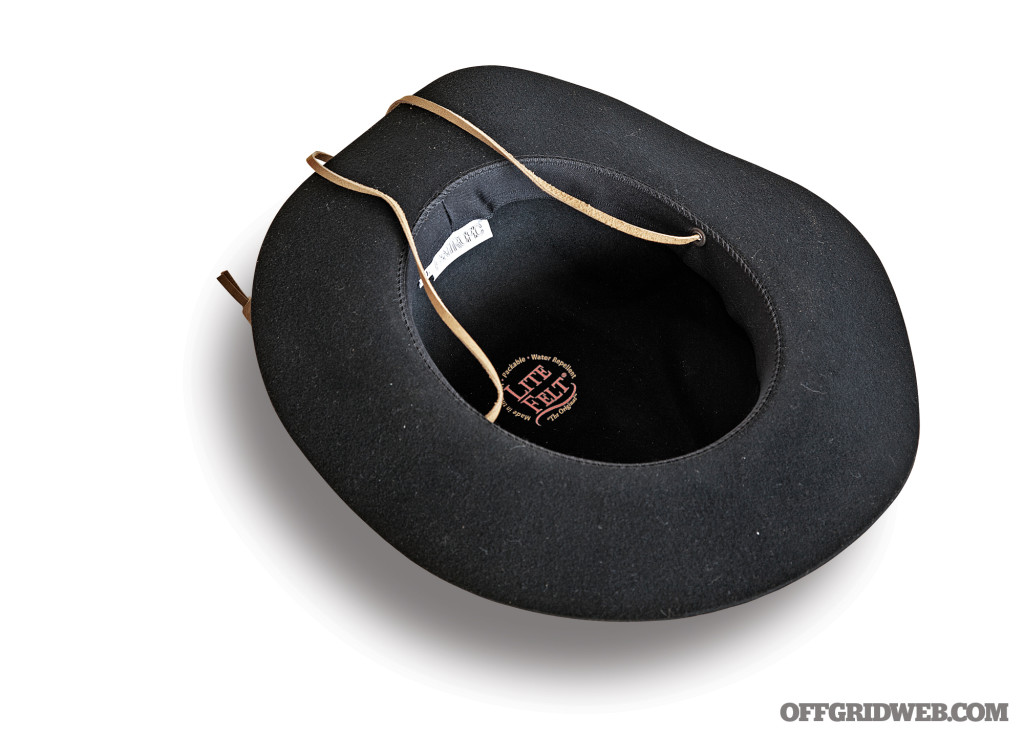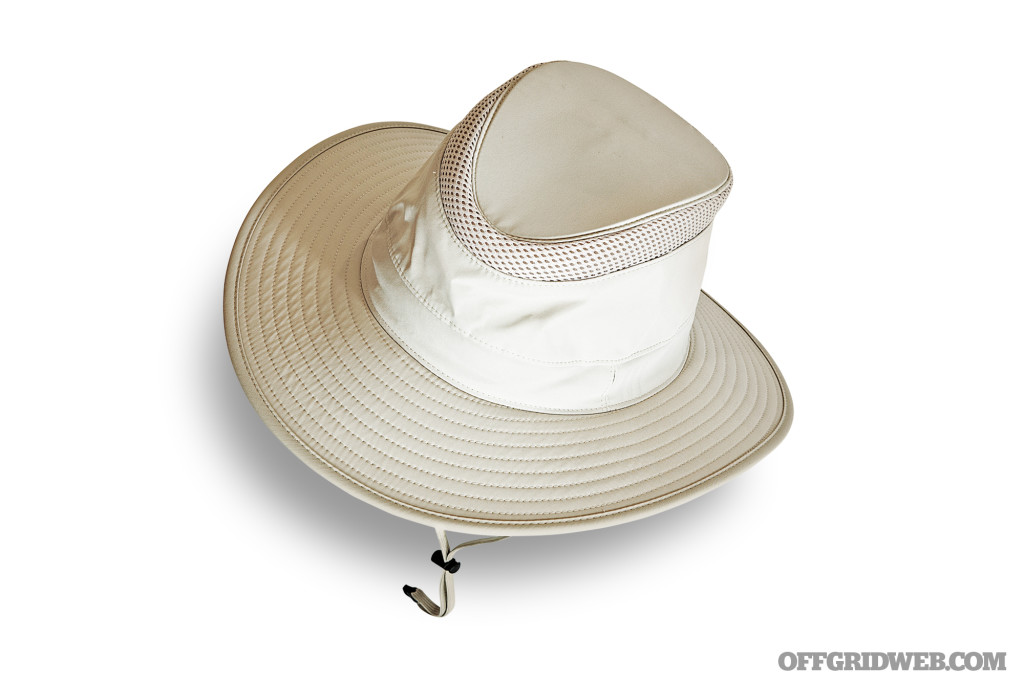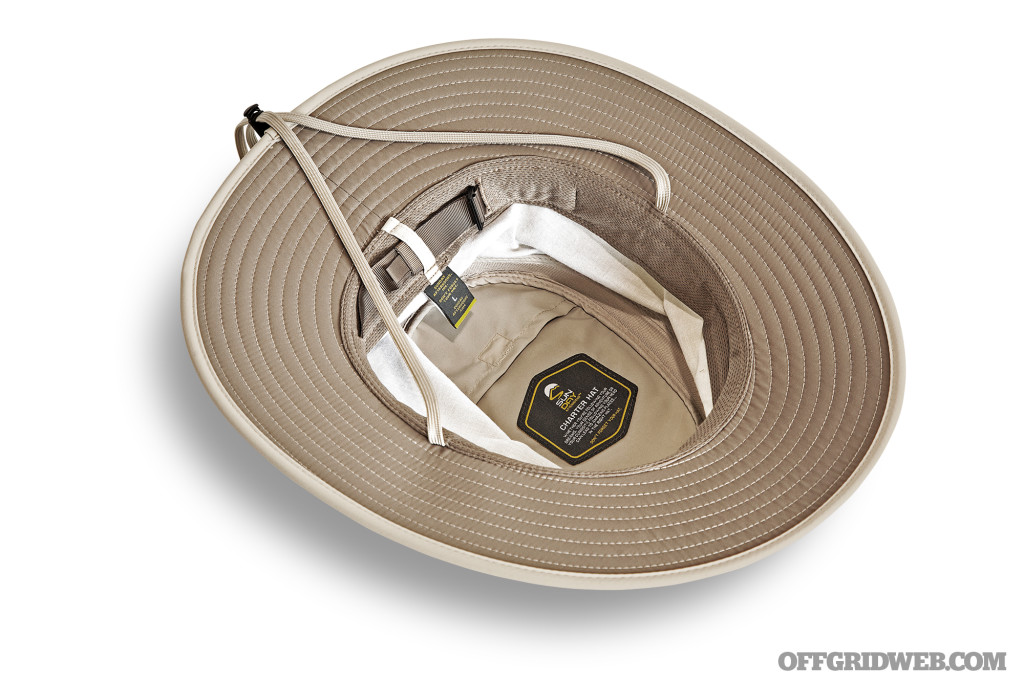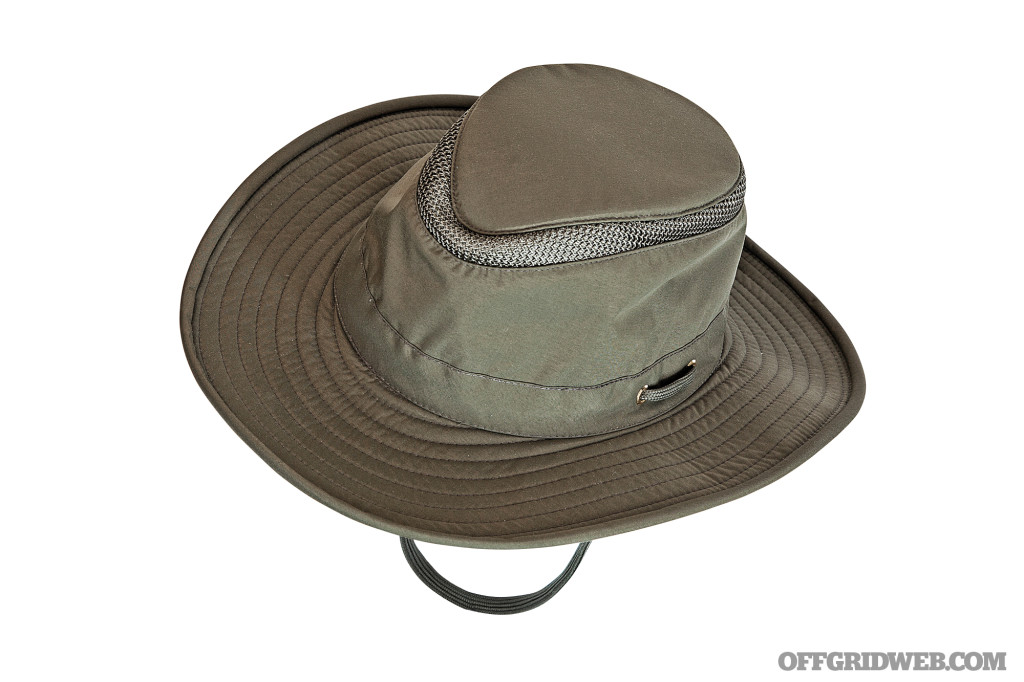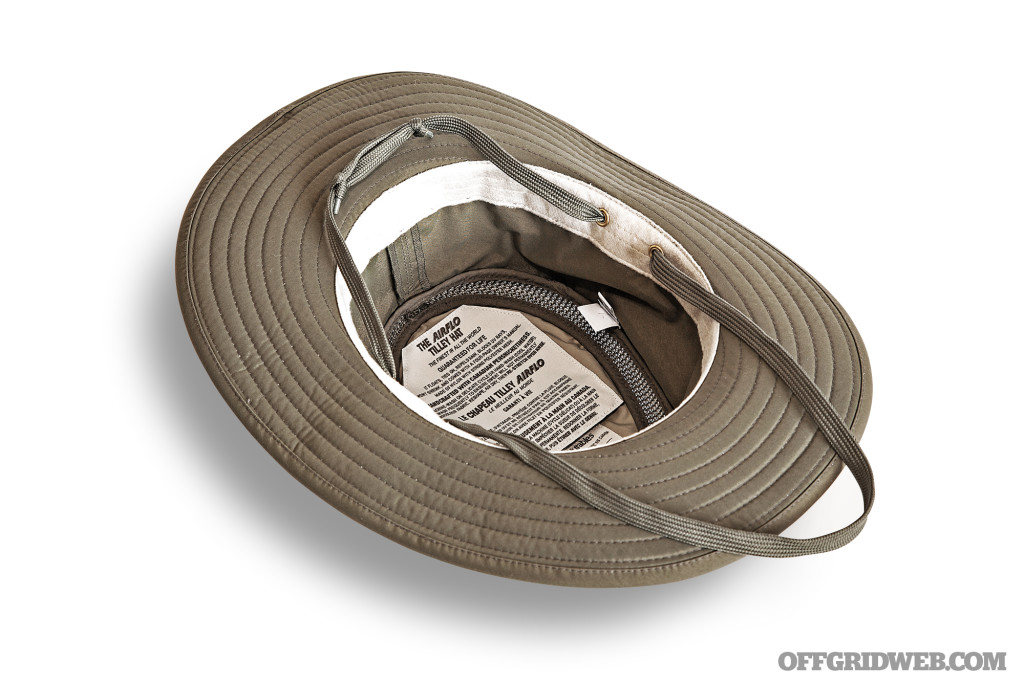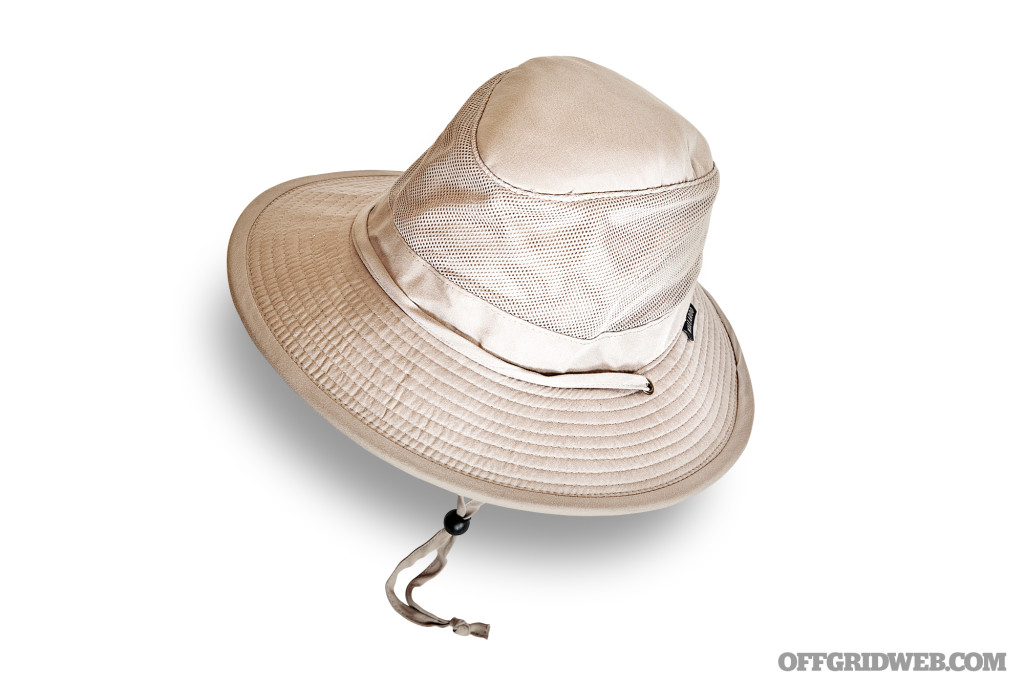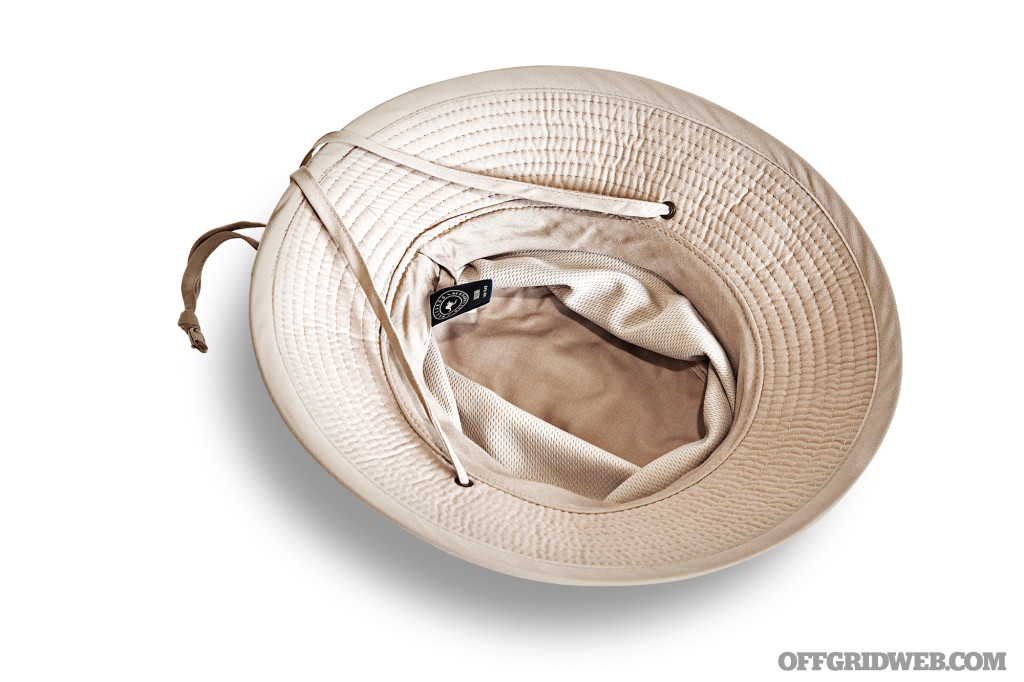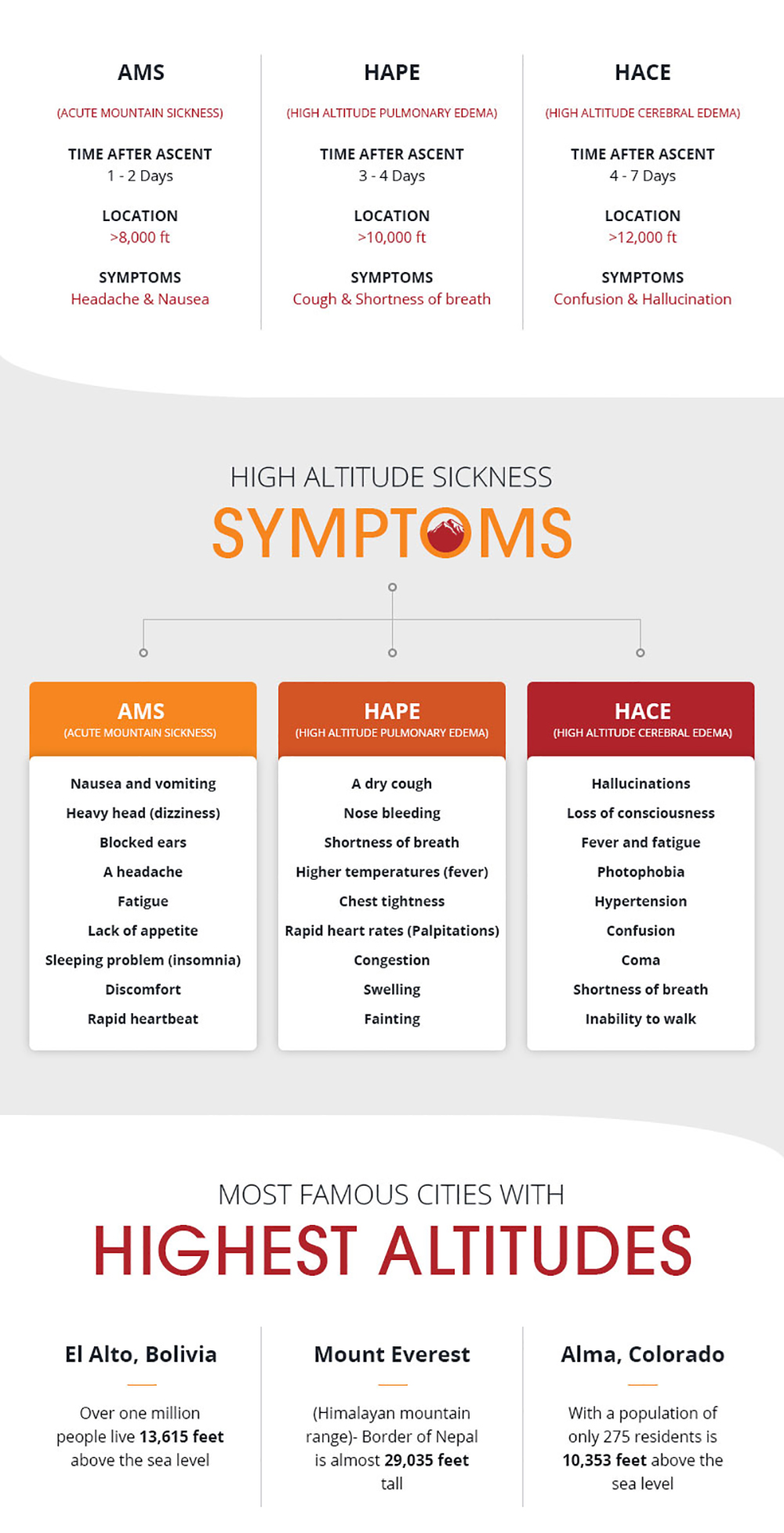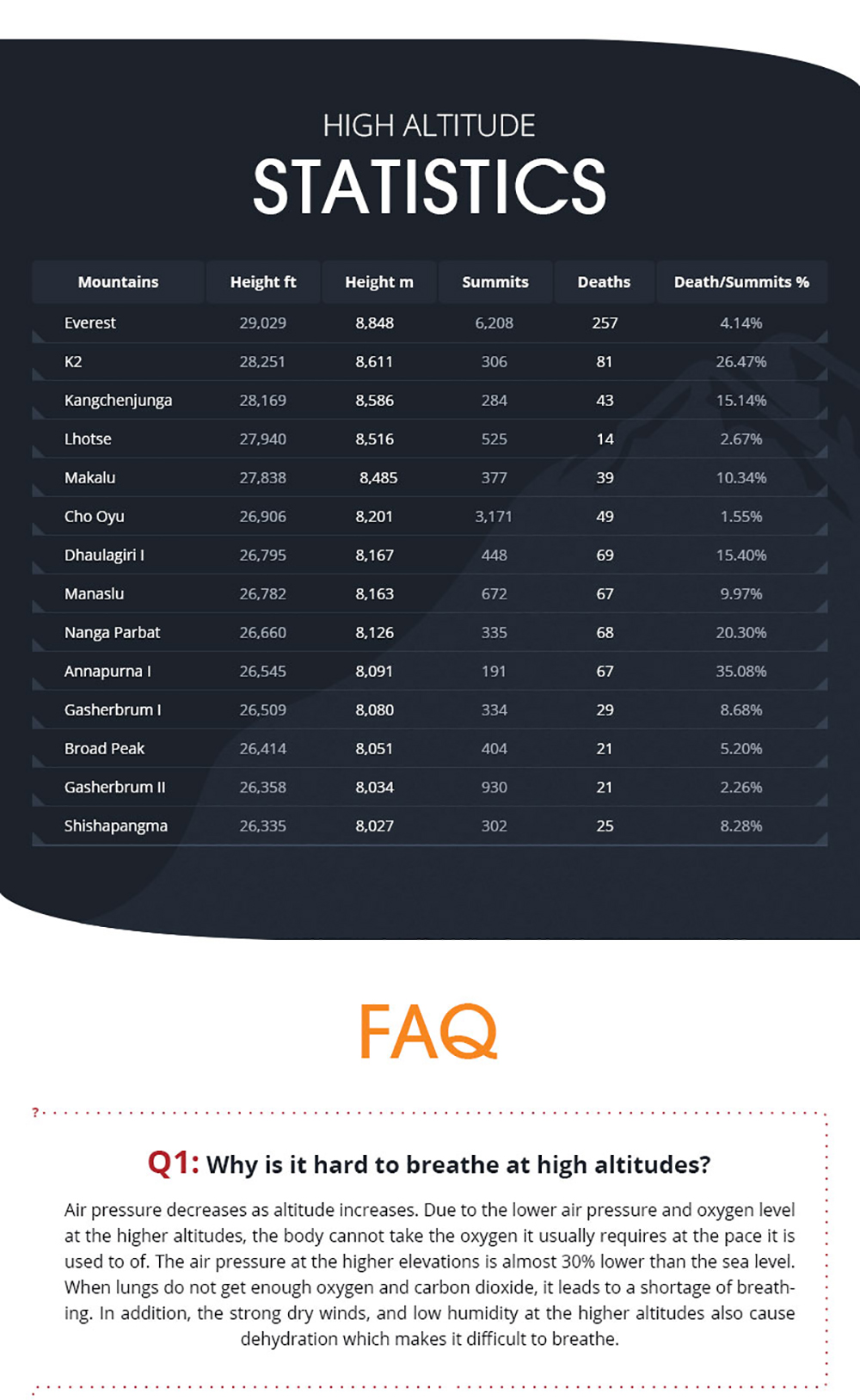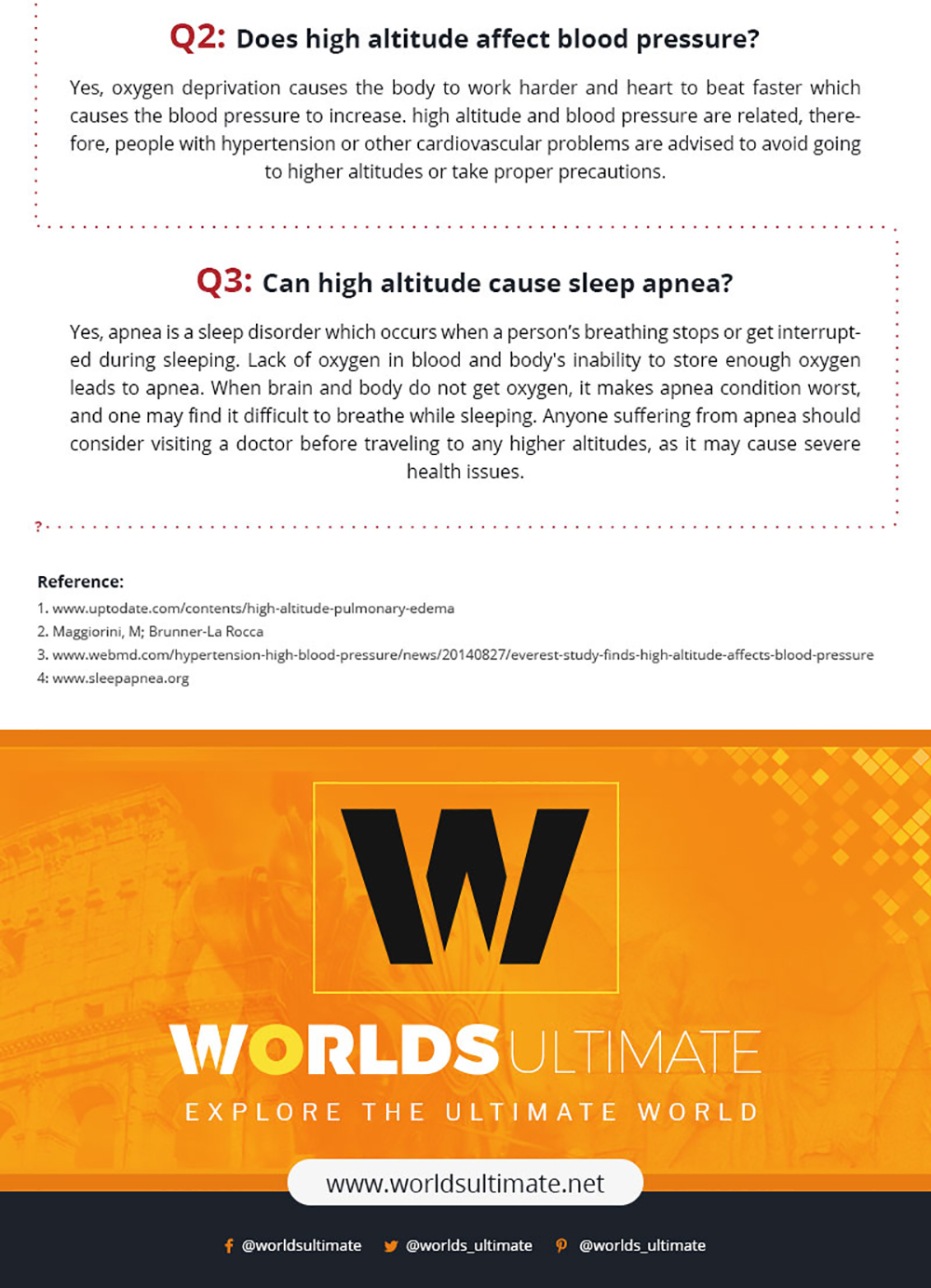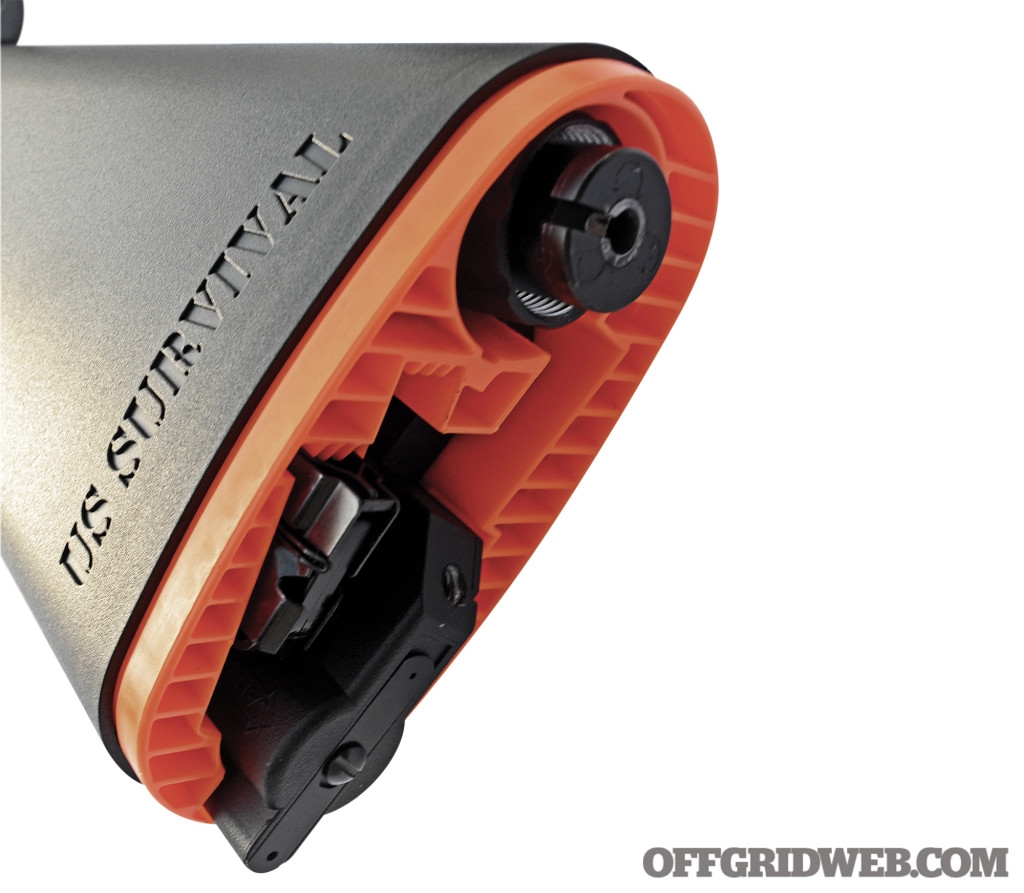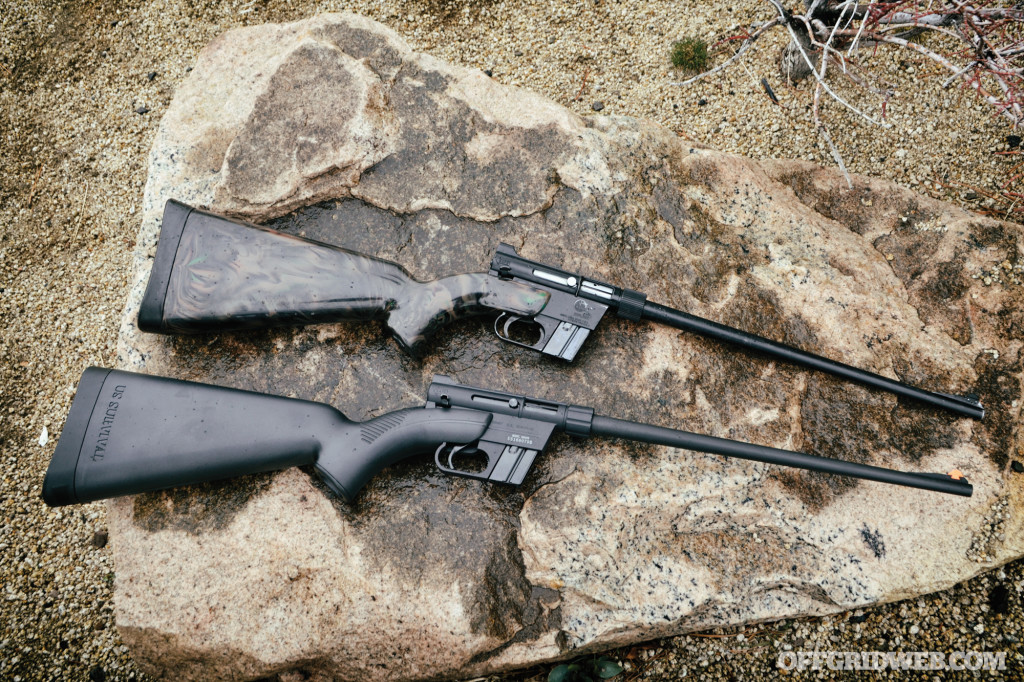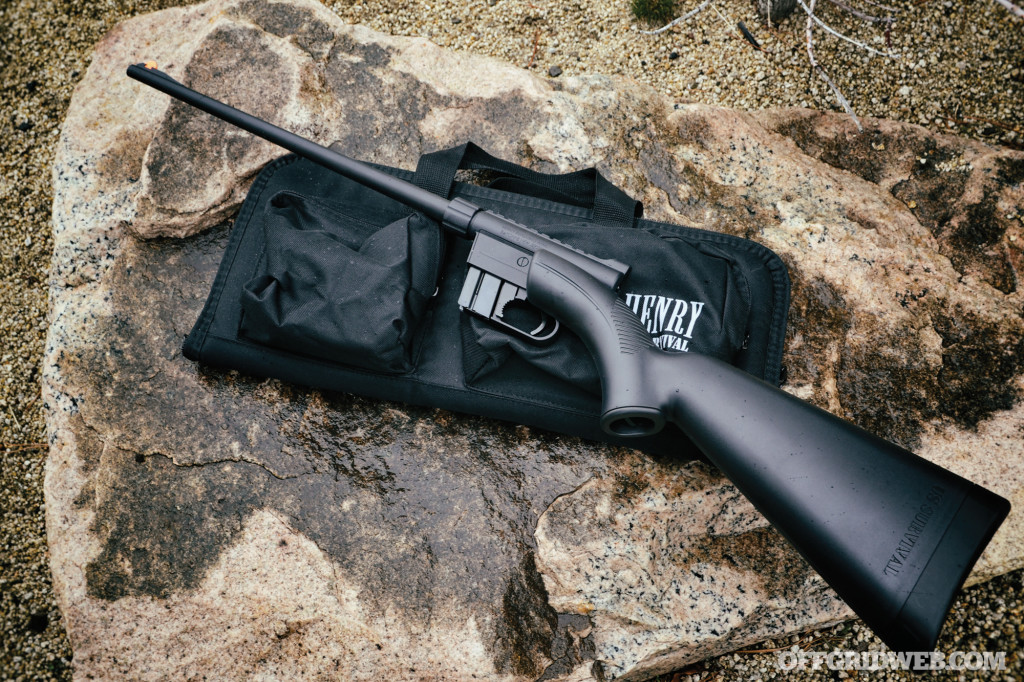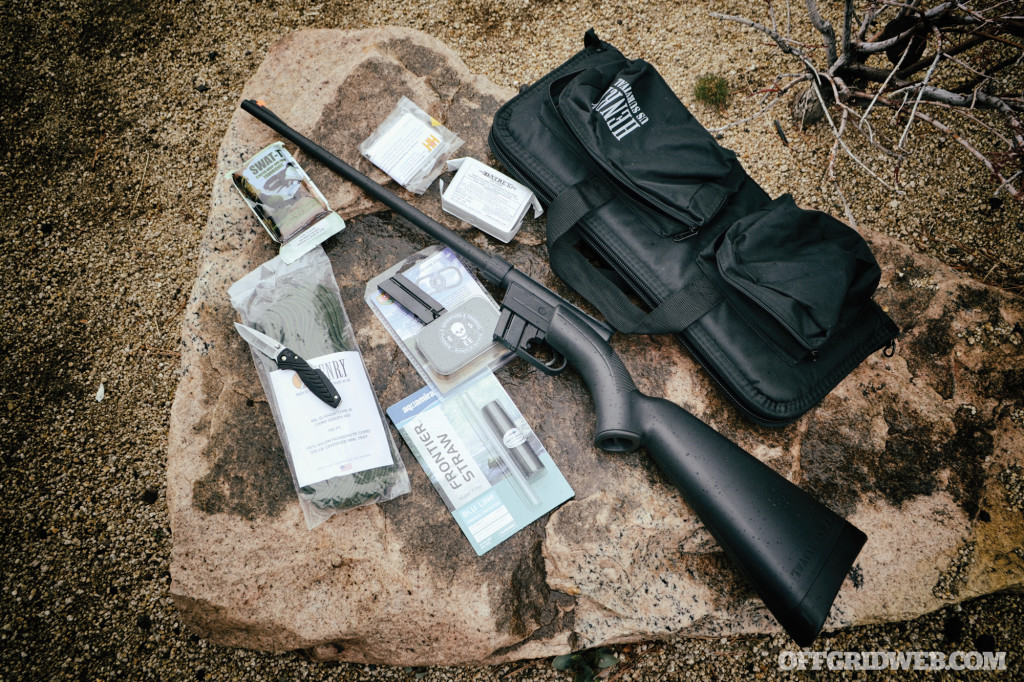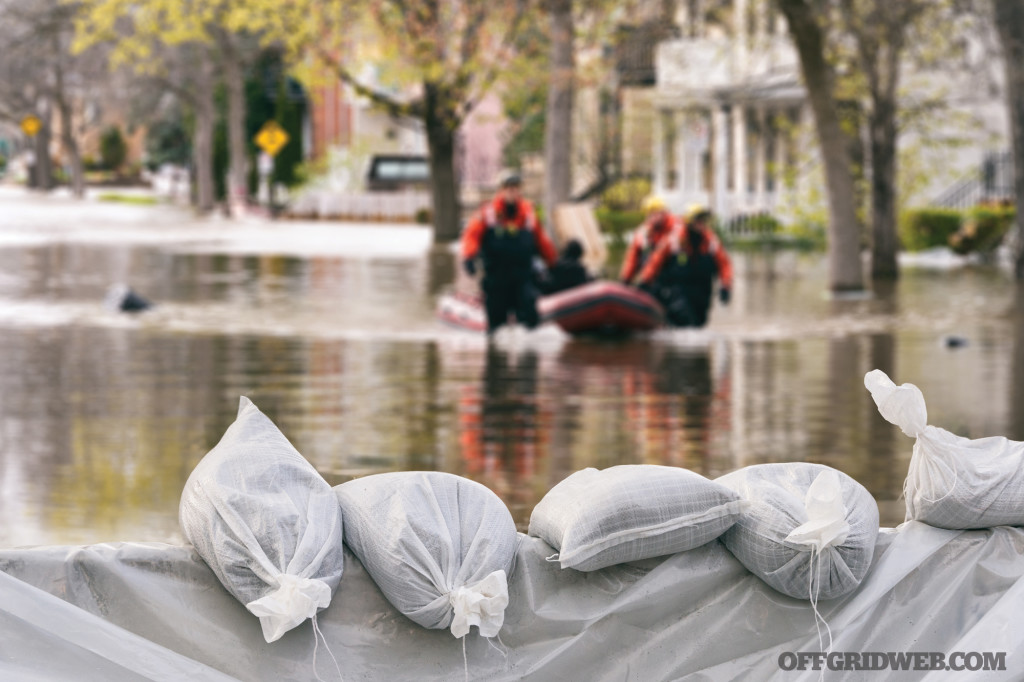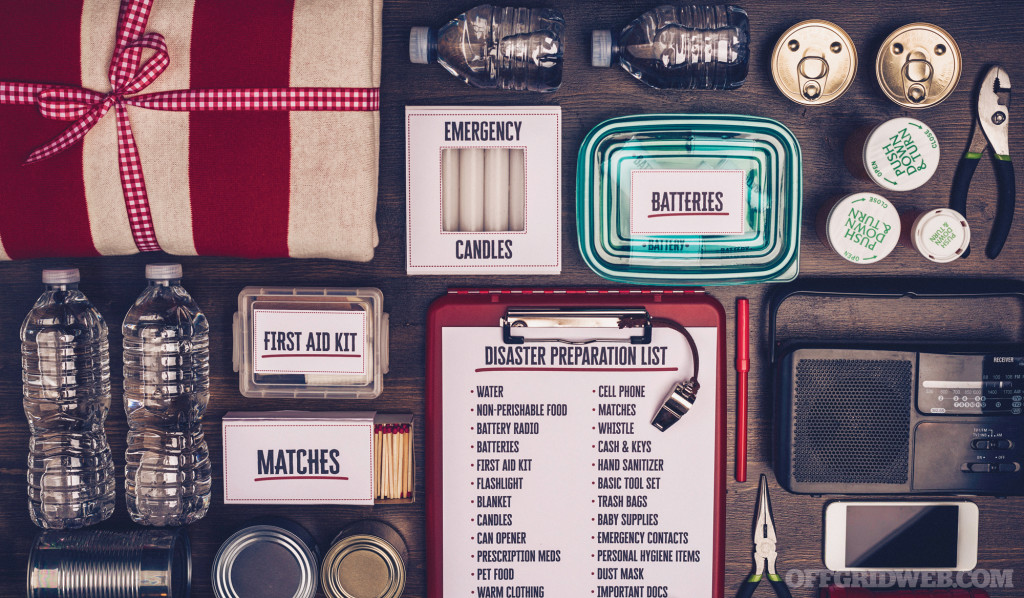Photos by RCP Photography
In a world where a compulsion for media appearances, showboating, and followers on social media has become a metric of credibility, people often mistake pretentiousness or marketability for truth. Cody Lundin doesn’t have millions of followers on social media. He doesn’t pawn his students off on questionably experienced underlings. He detests the word “survivalist” as well as the question, “What’s your favorite survival tool?” For Cody, the best survival tool is something you can’t buy at a big-box store — your brain.
But even after some 30 years as a survival instructor, Cody still manages to remain humble. There’s no mistaking the tone in his voice for anything other than what it is — a passion for teaching people skills that will keep them alive.

“People are quick to want a black-and-white answer to a profession that has millions of variables,” he says. “Whenever you put human nature into Mother Nature, in other words, scared people into wilderness, all hell can break loose and it can break loose quick. The coolest thing about my job is what I hate about my job — variables. You never know. You’re never really sure. You never have it locked in. There is no expert. You’re always on your toes. The most stressful thing about my job isn’t physical; it’s psychological. It’s dealing with the stress of wanting my students to be OK, but not having all the answers. The more I think I know, the more I realize that I don’t really know sh*t.”
There was once a time when methods now known as “survival” were simply just known as “life.” People had no fancy gear to rely on. It was a common sense existence free from the modern conveniences society has become dependent on — and many wouldn’t know how to get by without. Many of these practices have been lost to time, but more have been lost to human complacency. Cody is one of the few people left who safeguard these traditions.
Our Interview with Cody Lundin
RECOIL OFFGRID: Where did you grow up?
Cody Lundin: My dad was military, so it’s like, where didn’t I grow up. I grew up all over the place, including Europe.

Learning to process poi in Hawaii.
What early experiences made you understand the importance of learning and practicing survival techniques?
CL: Being an only kid in a military family that moved a lot, one of the main things that I could have as a constant in my life growing up was the outdoors. I spent a lot of time outdoors and got well-acquainted with wherever we went. Later on, my folks were pretty aggressive about going outside, whether it was canoeing in Minnesota or other things; we were outside quite a bit. The outdoors was a friend you could count on [laughs] because wherever you went it was always there.
What does the term “survival” mean to you?
CL: It means nothing. It’s just a catchall word that used to mean that if you didn’t do something correctly, you were dead, but it’s gotten a lot worse because of the media, YouTube, Facebook, TV shows, etc., where you have people reciting a word they have no experience with. The word I dislike even more is “survivalist,” because it has no definition and that’s why the media uses it. They can get away with a no-definition statement about someone, and therefore they don’t have to vet that individual.
Also, regarding survivalists, last time I heard they shoot cops and blow up federal buildings and that’s not what I do in my courses. I had a lady from a newspaper back East ask me about that term. Do you remember Eric Frein, the guy who was shooting those cops?
Yes, that was in Pennsylvania if I’m not mistaken.
CL: It was. I think it was a Pennsylvania paper, and the lady called me up because they were calling him a survivalist because he went camping or some bullsh*t like that, and she was the only one in 20-plus years who asked me, “What the hell is a survivalist? What does that term mean?” and the whole article was just about that. The bottom line is we didn’t have a definition, but she was the only one who ever asked about that in all this time.
The reason I think that terminology is important is because I’m dealing with people’s safety. If I made a show about “cityists,” it’s like, what the hell does that mean? A city expert, right? Because we have all these survival experts out there, so what if I called you a city expert? How would you define that on a professional résumé? But this was done intentionally. One, through ignorance, and two, again you don’t have to vet someone who is a survivalist. If you don’t have to vet them, they can be your everyday expert on your next TV show.

Lecturing about thermoregulation at Penn State.
How would you define what you do?
CL: I think what I do is I keep people alive, and in that respect, I give people more confidence and freedom. We have the big four at my school. One is modern outdoor survival skills — that’s what happens if you and your sweetheart are out and the Jeep breaks down or the classic day hike gone bad where someone needs search and rescue. That’s modern outdoor survival skills or wilderness skills.
Then there’s primitive living skills. People refer to this as bushcraft, and that’s the course where you can make fire with sticks, make stone knives, live like indigenous cultures, and learn about the native cultures of whatever continent you’re on, and that really isn’t as applicable to a modern survival situation.
We also have urban preparedness without the zombies, so that’s like if the grid goes down because of an electrical storm or whatever, and you learn how you go to the bathroom in your backyard safely, how to have alternative communications, hygiene, sanitation, knowing where the water’s coming from, how to disinfect it, stored food, etc.
And I teach homesteading as well, which is more long-term survival. I hate to use that word, but both grandparents in South Dakota were part of the Homestead Act of the 1800s. I have pictures of them in a sod house to prove it. But it’s more endurance type stuff and sustainable living. So, when you say “survival” to me, I’ll say “What kind?” I’m dealing with people’s safety, and it’s important to inform a potential student what they’re getting into because when you’re dealing with content without context you can get people hurt or killed.
What made you decide that you wanted to teach these kinds of skills?
CL: I just really love doing more with less, and I have for a long, long time. My motto for my school is “The more you know, the less you need.” We are not a gear-based school. We are a knowledge- and wisdom-based school, like pretty much all the native people out there. Even during high school in Wyoming we’d go out to the backcountry with limited gear and a piece of fishing line and jig for brook trout or whatever it was. I’ve always had that bent and that probably goes back to that nature connection we talked about.
I tried to advertise my school to all the summer camps in Prescott, Arizona, and no one gave a damn. I didn’t get one response after sending out about 20 letters. Then, I had a friend at the time make me a flyer, and I’d paste them on phone booths. That’s how I started in 1991 doing that. I started with a passion to teach people how to stay alive. I started honestly with a handwritten mailing list of people I thought gave a sh*t, stamps, and envelopes.
There was no Facebook, YouTube, no TV survival shows, or all of these ways there is to lie now and bullsh*t about all this experience you don’t have, but make it appear like you do because of social media. It was an archaic way to market, but it was honest and I miss it. Now it’s too easy to lie about being a survival expert, whatever the hell that means. Back in the day, with my teachers, it was just about more honesty and integrity in the craft, and a lot more people who were teaching because they loved it and weren’t trying to get famous.

Month long Prescott College course, Aboriginal Living Skills, 1994.
So you started in 1991 as a teacher?
CL: That’s when I started my Aboriginal Living Skills School. I started teaching at Boulder Outdoor Survival School in the late ’80s. Hopefully you actually have experience before you start your own survival school. Nowadays you just need a TV show and that automatically means you somehow have experience, which is a huge mistake. I worked for a couple years on and off for another school, and then started my own in 1991 in Prescott, Arizona.
What are the key concepts you stress in your instruction? Is there sort of an overarching theme in each of your courses?
CL: Yeah, the more you know, the less you need. I’m interested in imparting real knowledge to people without selling them bullsh*t gear. A lot schools out there, a lot of people, etc., they have their name, school, and courses attached to a plethora of sh*t they think that you need to survive. In Arizona, that’s called camping. When you have all the survival gear you need, that’s camping, that’s not a real survival situation.
What denotes a real survival situation typically is a lack of gear, resources, and an absence of whatever. We’re training people for worst-case scenarios. We’re training people with no food, no water, whatever. We don’t have all this sh*t in our backpack to trap a rabbit. That’s, again, a real lacking of context with typical survival instructors, and I use that term loosely. There’s so much gear focus and marketing on that. That’s not what it’s about because that’s not a reality in a situation where people end up dead. People end up dead due to a lack of resources. Whether that’s a lack of heat and they die of hypothermia, whether it’s a lack of cool and they die of hyperthermia, whether it’s a lack of water and they die of dehydration, or whatever, those are the biggest causes of death.
What we try to instill in our students is doing more with less, being smart, preparing wisely, not being focused on gear, but knowing what gear would be nice to have in a certain situation, and trying to turn out a student who is free from me. What I mean by that is some instructors really love to have their ego stroked and turn into a cult figure and then brand and sell all this sh*t with their logo. I don’t want that. I’m pretty hard on my students because I care about them and I want them to live.
What were some experiences that influenced you to design your course curriculums in a certain way?
CL: One of the things that I was so fortunate in was to have really good instructors who taught me. I had instructors who were really honest. I admired their integrity, they were really good at their skill set, and they really wanted to teach it in a way that was pure because they realized they were dealing with people’s safety. Just like if you have good parents or grandparents, and you’re raised in a really supportive upbringing, that rubs off. And I realized how serious the profession I’m involved with is. When you’re dealing with people’s safety, you can’t cut corners or be deceitful. It’s unethical and it’s very, very dangerous. So I think knowing the gravity when people trust me with their lives, it’s really important to be honest. I hope that integrity is all throughout my school because I care about the people who are training with me.
By knowing what causes people to die, that helps formulate the curriculum of survival training, but it’s always backed up by real statistics, physiology, and fear psychology. A lot of the sh*t people teach has no application in a real-world survival situation because it’s impossible to deal with people who are under stress and fear.
Who were some of your mentors?
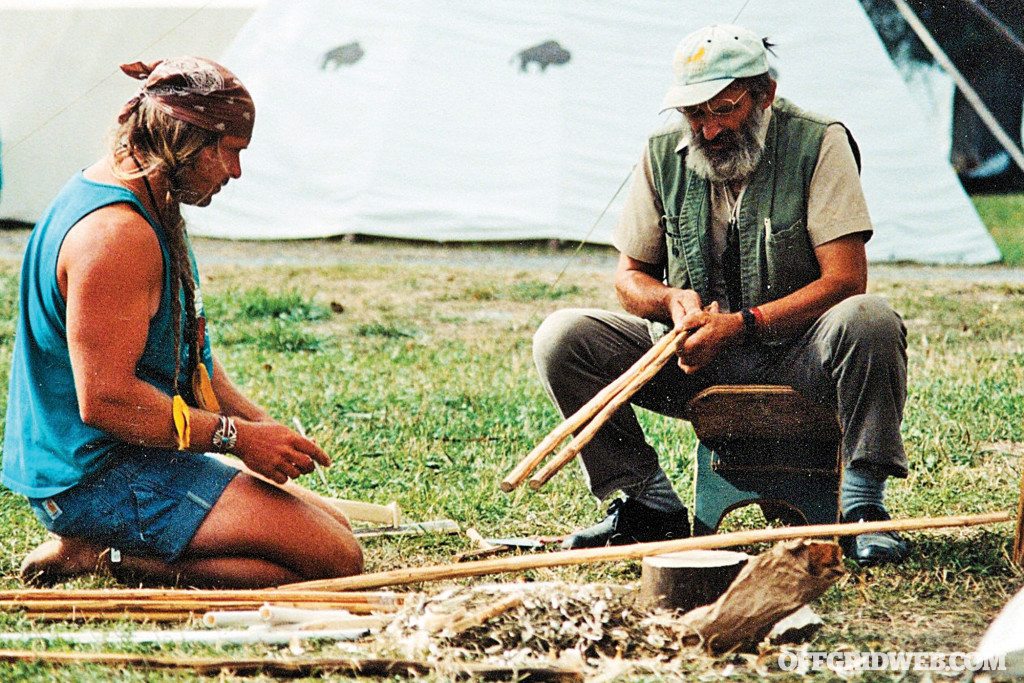
Learning from master mentor Mors Kochanski, Rabbit Stick Rendezvous, mid 1990’s.
CL: Mors Kochanski, who I’m sure that you’ve heard of, and if you haven’t, you should have. He was one of my greatest instructors. He’s up in Canada. He’s a boreal specialist, so I didn’t learn desert survival from Mors, but what I did learn is that a lot of people are ripping him off and don’t give him any credit about the knife hanging around their neck or the fact that he introduced Mora Knives to North America. Everyone you see now with these knives, it all came from Mors essentially.
Dave Ganci, for desert survival. Dave was a master in the 1980s with teaching this new unit called SEAL Team 6 how to survive in the desert, and teaching this new unit called “The D Boys,” which later was known as Delta Force when they were first initiated into the military. Dave has written several books about desert survival. These are two no-bullsh*t guys. They might not know how to use a computer very well, and they don’t give a sh*t about Facebook [laughs]. They were training before most of these people on TV were even born. There’s many more.
Dave Wescott is another. I learn a lot from my students because they don’t have any bias on how things have been done. John and Geri McPherson were also some of my earliest instructors.
Melvin Beattie was my tanning buckskin mentor, and this goes way back to 1989 or 1990. There are really too many to list. These were some of my core instructors and how I learned how to teach. You can be good at skills, but you can suck as a teacher. You have to be able to translate those skills to people sitting in front of you. Mors was a great teacher. He had a unique way because he dealt with so many kids, had so many curriculums at the University of Alberta, and he’d been doing it for so long that I really sucked his brain and patterned my teaching methodology after him more than anyone else.

Generations… with Dave Wescott and Larry Dean Olsen.
What do you think differentiates you and your approach from some of your other instructor contemporaries?
CL: Field experience. Most of the people you may think of, I’d ask for their résumé and see how long they’ve really been around. There are my instructors who have seniority over me by far because they taught me a lot, but we’ve been around a long time. This is an institution where, if you sign up for an Aboriginal Living Skills School course, you get me. You don’t get some other instructors who might have a year or two of experience. You get me when you come to my school and this will be our 27th year coming up. There are very few schools that can say, yeah, this is the core instructor you’ll get when you sign up as opposed to just a bunch of other helping instructors that rotate in and out.
Tell me a little about being on Dual Survival and Lost in the Wild. What were those experiences like?
CL: Lost in the Wild was a pilot that never went to series. We did two episodes. That was in 2003 and well before Man vs. Wild or Survivorman. That was essentially one of Discovery Channel’s first survival shows, ironically. It didn’t go to series because it was broadcast at the same time as this other show that was kicking ass called Survivor. Of course, everyone was watching Survivor, or so I was told.
With Dual Survival, I was the first one picked and I helped develop that show. It started off being one of the coolest things that ever happened to me and ended up being the worst thing that’s ever happened to me. And mainly that’s because of a lack of leadership and lack of integrity of people involved with that show.
What do you think TV survival tends to overlook about real life survival?
CL: Everything [laughs]. It overlooks intention, content, context, integrity, honesty, realism, and it replaces it with phony drama and phony so-called survival experts to the detriment of millions of people all over the world. Survival TV is one of the worst things that’s ever happened to the professional outdoor survival instructor as far as realism and truth.
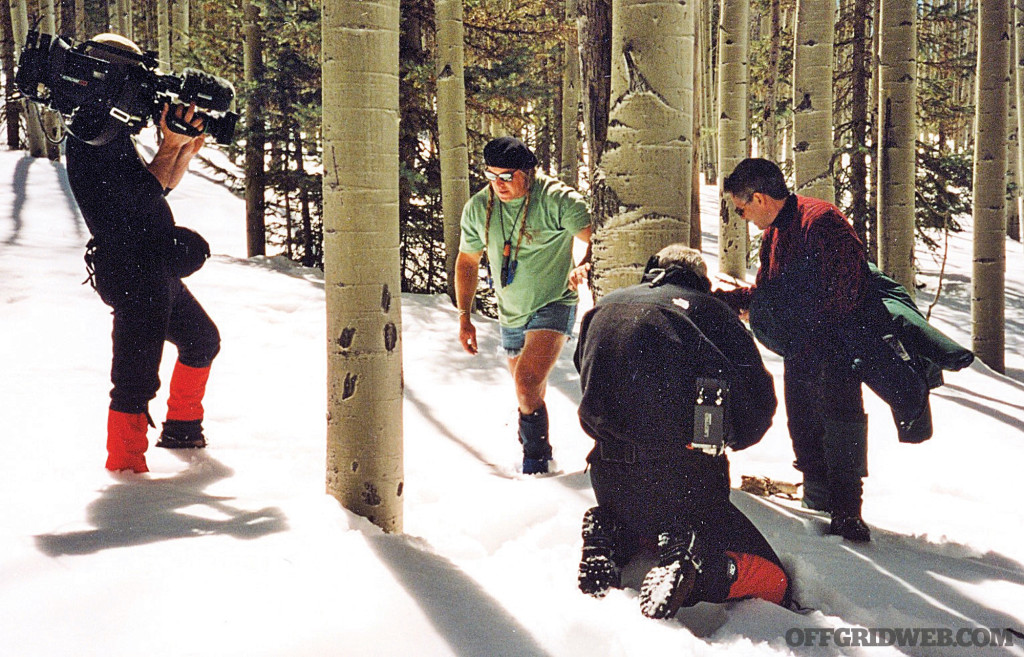
Dateline NBC winter survival shoot, 2001.
On the flip side, it has got more people interested in real survival skills if they can find a real survival instructor. But if they insist on believing what they see on TV, if they live long enough to find a real survival instructor, then we’ll train them. If not, it’s called the gene pool.
What do you think are the biggest things people should look for in a survival instructor?
CL: I’ll rattle some off, but you can view a link on my website called ‘Choosing the Right Instructor’ that has a whole bunch of stuff to look for. Off the top of my head is a professional résumé that has your experience, the years you’ve worked, and some contacts of people who could vet your résumé to make sure you weren’t lying. That’s No. 1. If you’re going to put the safety of you and your family in someone’s hands, and they don’t have a résumé about their experience, then that’s a very stupid, dangerous thing to do.
The other thing would be, do they live what they teach? If they’re teaching desert survival, do they live there? Do they have access to it? You don’t teach desert survival if you live in New Jersey. The nice thing about Arizona is we have all four North American deserts, three geographic provinces, and 10 different biotic life zones. We have more biodiversity in the shortest drive time than any place in North America.
So just beware of the social media stuff, résumé is No. 1. And are they respected by their peers? If you have a name that’s not known who is new, there’s nothing wrong with that. I was new at one point, but a lot of the new people are being passed off as experienced survival instructors and you can’t fake field experience. You can’t Google field experience. The reason field experience is important is because any TV production company can Google content. They just rip off other people’s blogs, websites, or whatever, and they steal their content, but they have no context for it because these people don’t have any experience with outdoor survival skills. So what sets the qualified outdoor survival skills instructor apart from the novice is they know the content, but they’ve been out in the field enough to where they have a wide array of contextual experience for that content. Period. And you can’t fake that.
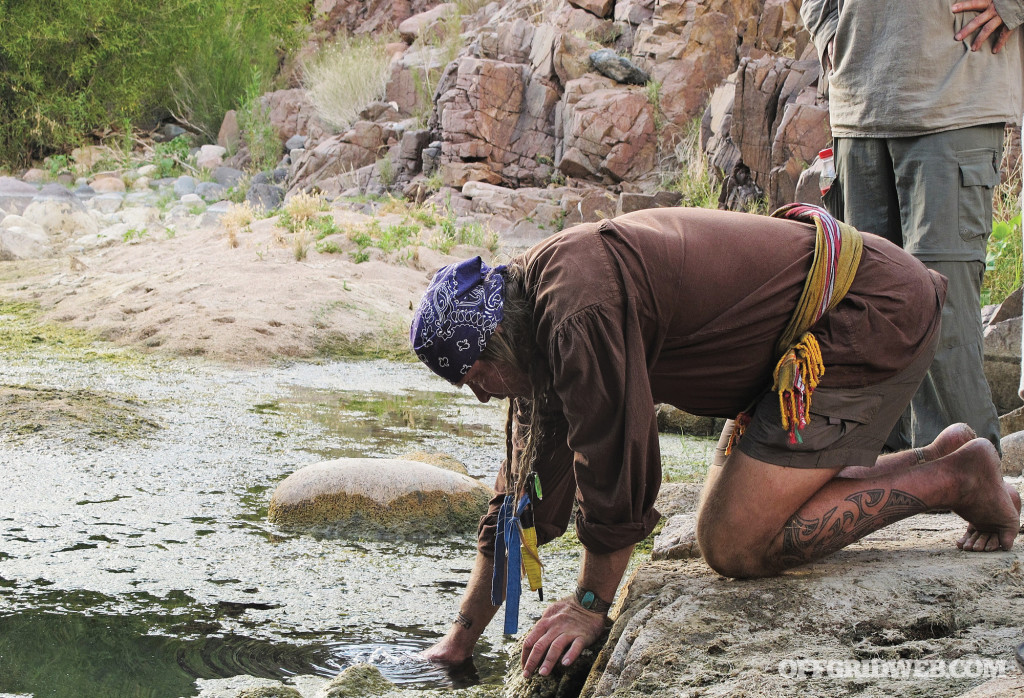
ALSS Arizona Combo Special course, getting water in the desert.
What do you think some of the biggest fundamentals are that apply to both wilderness and urban survival situations?
CL: It could be hypo and hyperthermia. The reason I say that is because it happens in a lot of grid-down scenarios. Everyone, with some exceptions, is living in a house that’s horribly linked to the grid. In other words, if it doesn’t have grid power in the winter, all of a sudden it’s 30 degrees in their living room, or it’s 115 degrees in the summer, but it happens, especially with young people and the elderly.
The other thing would be water. Dehydration in a wilderness setting is the same as it is in an urban setting. At my school we talk about what’s the most common ways for people to die. Hypothermia and hyperthermia are exacerbated by dehydration. That can happen in a city, desert, or mountains. And then it gets more case specific. Food is way out there. It has more predominance in a cold-weather situation because food is metabolism for the body, but there’s no one-size-fits-all answer.
If you back it up and look at the statistics of how most people die, those would be three biggies right there. France had a heat wave go through the country a few years ago. It killed thousands of people in their own homes from hyperthermia and dehydration, which is something you’d typically only think about in the desert.
At my school we’re dealing with human physiology, physics, and psychology. If you have a survival instructor who doesn’t understand these three concepts, run! A lot of people out there don’t have any medical experience and we’re trying to keep the human body alive. You need to understand basic physiology if you claim to be a survival instructor, otherwise it’s like going to a mechanic who doesn’t understand how an engine runs.
I’ve heard you have a house that’s essentially off the grid and you live a self-sustaining lifestyle. Tell us about that.
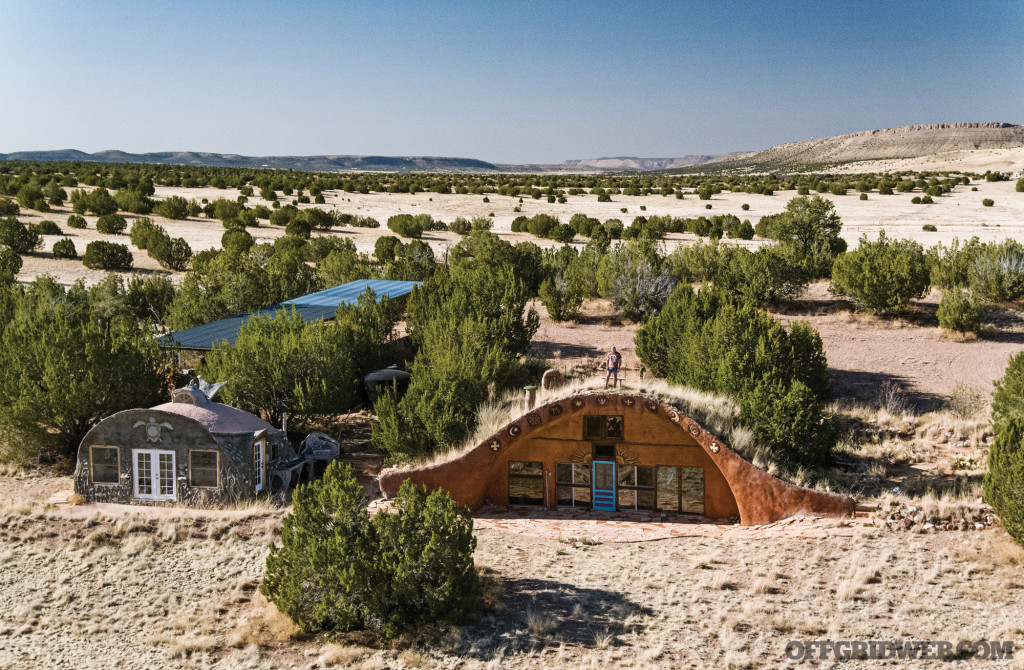
Cody’s self-sustaining home.
CL: I wish I had a self-sustaining lifestyle. I go to the grocery store, so my missing link is growing food because I don’t have time for it. My homestead is off-grid, it heats and cools itself, ventilates itself, and it has it’s own solar power supply. I catch rain, I compost my own waste, and I recently got a well. So the only thing it’s missing is food production. To have food production in a sustainable state is a hell of a lot of work. I wanted to design a home that would heat and cool itself without grid power and I’ve done that. I don’t burn wood, I don’t do anything. I go into my house in the wintertime and it’s warm; I go into my house in the summertime and it’s cool.

I’ve dealt with the physics, the heat lost and gained, by dealing with the orientation of my home’s thermal mass and insulation. Essentially I’ve taken the best of 21st century design concepts and linked them with native technology and indigenous strategies. I’ve painted it with concrete dye, so I don’t have to paint it ever again. The roof has grass and plants on it, which attracts rabbits, and I eat the rabbits. I tried to take designs and materials that’d work a long time for the budget and time I have that’d be as self reliant as possible and I’ve done that.

What gear or resources do you think people have become the most over-reliant on?
CL: There’s a lot of gear replacing common sense in the military, in survival training, and in the general population of day hikers. There are many people who go out there with a cell phone and nothing else because they expect that cell phone to bring them out of danger if something goes wrong. These people are just a gene pool washout. What’s happening is technology is replacing common sense, and when anything replaces common sense, death goes up.
What do you think the biggest misconception is that people have about survival in the sense of doing what you do and keeping people alive?
CL: I think the biggest misconception people have about survival training, is that it can’t happen to them. They think they don’t need that survival training because they don’t go backpacking or go out in the woods. Those are the first ones dead in their living rooms. They’re just not interested and haven’t made the crossover to how wilderness survival training would help them in an urban scenario or in their backyard with fire skills and how to keep warm when there’s limited resources. So denial is a big one.
Another answer to that question is survival TV shows. Survival TV shows have been lying to the world for more than a decade and promoting personalities to rock star status who have no experience in outdoor survival skills at all. That’s dangerous not just on TV, but then some of those people start survival schools and sell gear at the big-box stores, made in China of course. I see this real dishonesty taking hold in social media, blogs, TV, and books where we have the “expert” who knows whatever needs to be known and that’s not true.

Is there one recurring issue in the world you think people need to be more prepared for?
CL: Themselves. It rolls right back into denial. A lot of people might think that you’re a doomsday prepper freak because of your magazine. The reason they think that is we’re so far removed from sustainability and what my grandparents called common sense. We are just people who want to understand life at its basic elemental level and that’s seen as weird. If you’d have told my grandparents they were preppers, they would’ve laughed in your face.
In an environment like South Dakota, with kick-ass winters, you just kept extra food, extra firewood, and extra blankets. And it wasn’t just for yourself. It was also to help out your neighbor if they needed help, which is also a thing of the past unfortunately. So I think what’s missing in all of this is that people have forgotten how reliant they are on technology and how clueless they are about the physics of their own body and how to keep it alive in situations that don’t involve big-box stores and commuting to work.
I was doing research for a book years ago, and there was a Red Cross statistic that I probably won’t get completely right, but they did this survey and found that less than 5 percent of all Americans felt prepared that they could handle an emergency for themselves and their family. What that means is that we have 90-plus percent of people who don’t have a clue about what’s going on that will be the walking wounded, crowding the hospitals, and whatever. This country was founded on self-reliance, damn it! It’s not some abstract, weirdo thing. The stronger we can make our communities and our planet, because we’re all in it together, the better off we are.
The biggest thing that’s missing is a failure to realize that we’re no longer sustainable on this planet.
About Cody Lundin

Recommended Reading List:
- The Long Walk: The True Story of a Trek to Freedom by Slavomir Rawicz
- 98.6 Degrees: The Art of Keeping Your Ass Alive by Cody Lundin
- When All Hell Breaks Loose: Stuff You Need to Survive When Disaster Strikes by Cody Lundin
- Northern Bushcraft by Mors Kochanski
- The Basic Essentials of Desert Survival by Dave Ganci
Favorite quote:
“The more you know, the less you need.”
The one thing you never leave your home without:
Common sense
URL:
www.codylundin.com
More From Issue 26
Don’t miss essential survival insights—sign up for Recoil Offgrid’s free newsletter today!
Read articles from the next issue of Recoil Offgrid: Issue 27
Read articles from the previous issue of Recoil Offgrid: Issue 25
Check out our other publications on the web: Recoil | Gun Digest | Blade | RecoilTV | RECOILtv (YouTube)
Editor’s Note: This article has been modified from its original version for the web.

